Transforming a ceiling with shiplap not only adds architectural interest but also brings warmth and texture to any room. From crisp white boards that brighten a cottage-style kitchen to stained wood planks that evoke rustic charm, these 20 ideas showcase the versatility of shiplap overhead. Whether paired with dramatic beams, painted in bold hues, or combined with skylights, shiplap ceilings can redefine a space’s character—making low ceilings feel taller, drawing the eye upward, and creating a cohesive design statement. Here are 20 curated ways to refresh your home with a shiplap ceiling, complete with styling tips and installation considerations.
1. Contrast White Shiplap with Black Beams
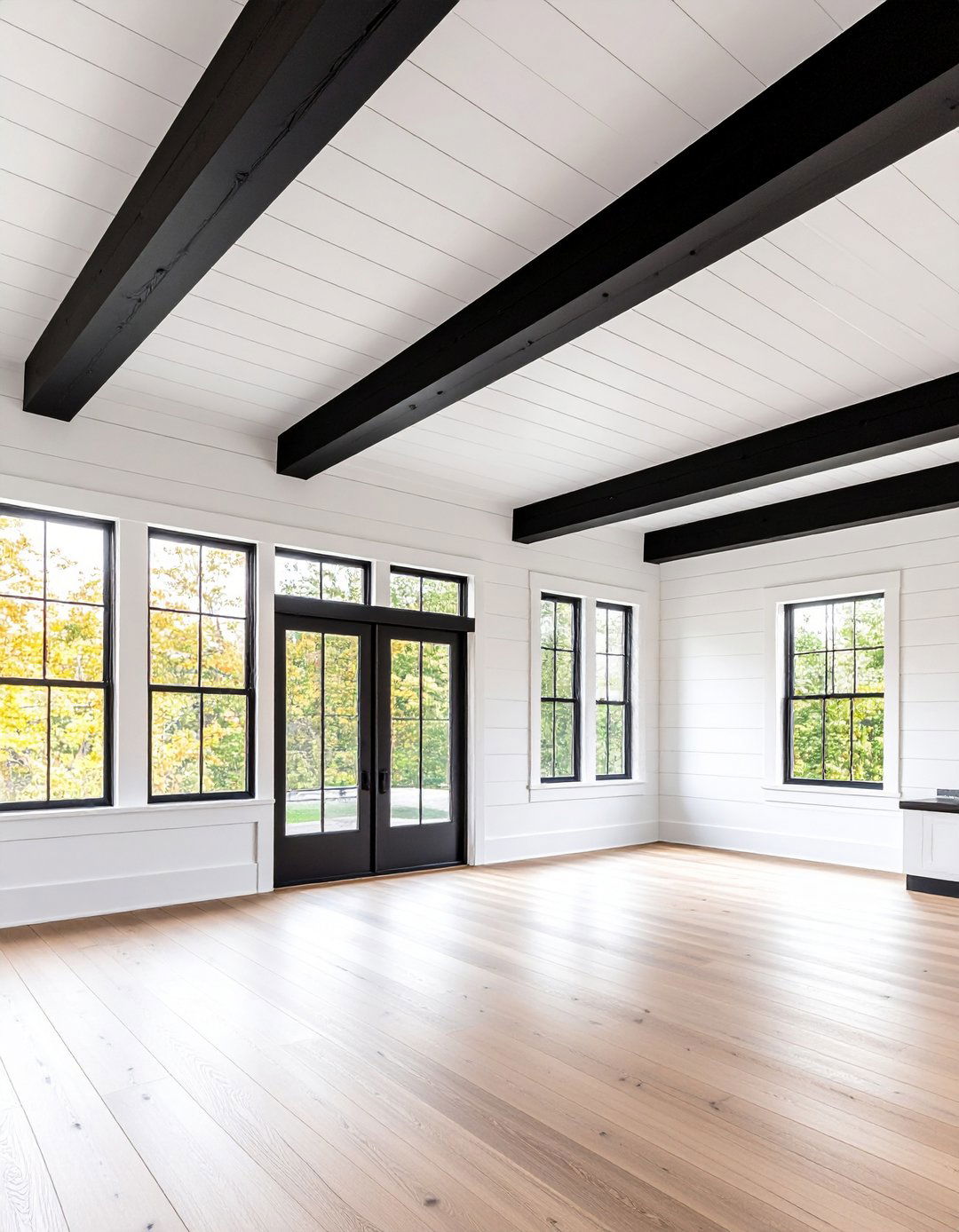
Pairing a bright white shiplap ceiling with sleek black beams creates a striking visual contrast that instantly modernizes a room. The deep tones of the beams draw the eye and frame the crisp shiplap, while echoes of black in furniture or fixtures tie the look together. This dramatic interplay works especially well in minimalist or industrial-inspired spaces, where the ceiling becomes a focal point without overwhelming the décor.
2. Paint Wood Beams to Match Shiplap
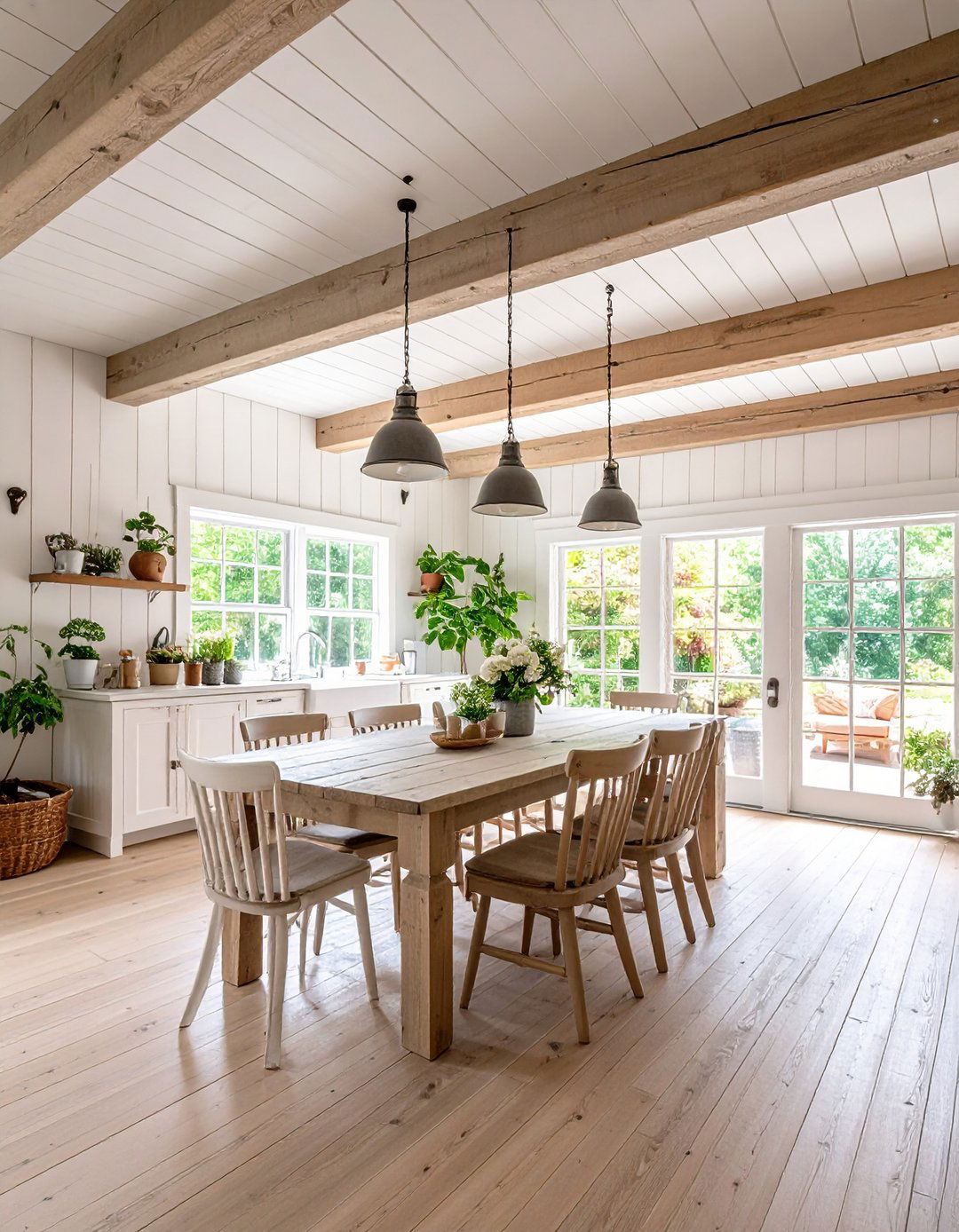
For a seamless farmhouse aesthetic, paint both your shiplap ceiling and its wooden beams in complementary tones. A whitewashed shiplap ceiling adorned with lightly stained or white-painted beams emphasizes the wood’s natural knots and imperfections, lending a timeworn character. This cohesive treatment is perfect for kitchens seeking a relaxed yet polished vibe, marrying rustic charm with modern simplicity.
3. Accentuate a Hallway with Wood Plank Shiplap
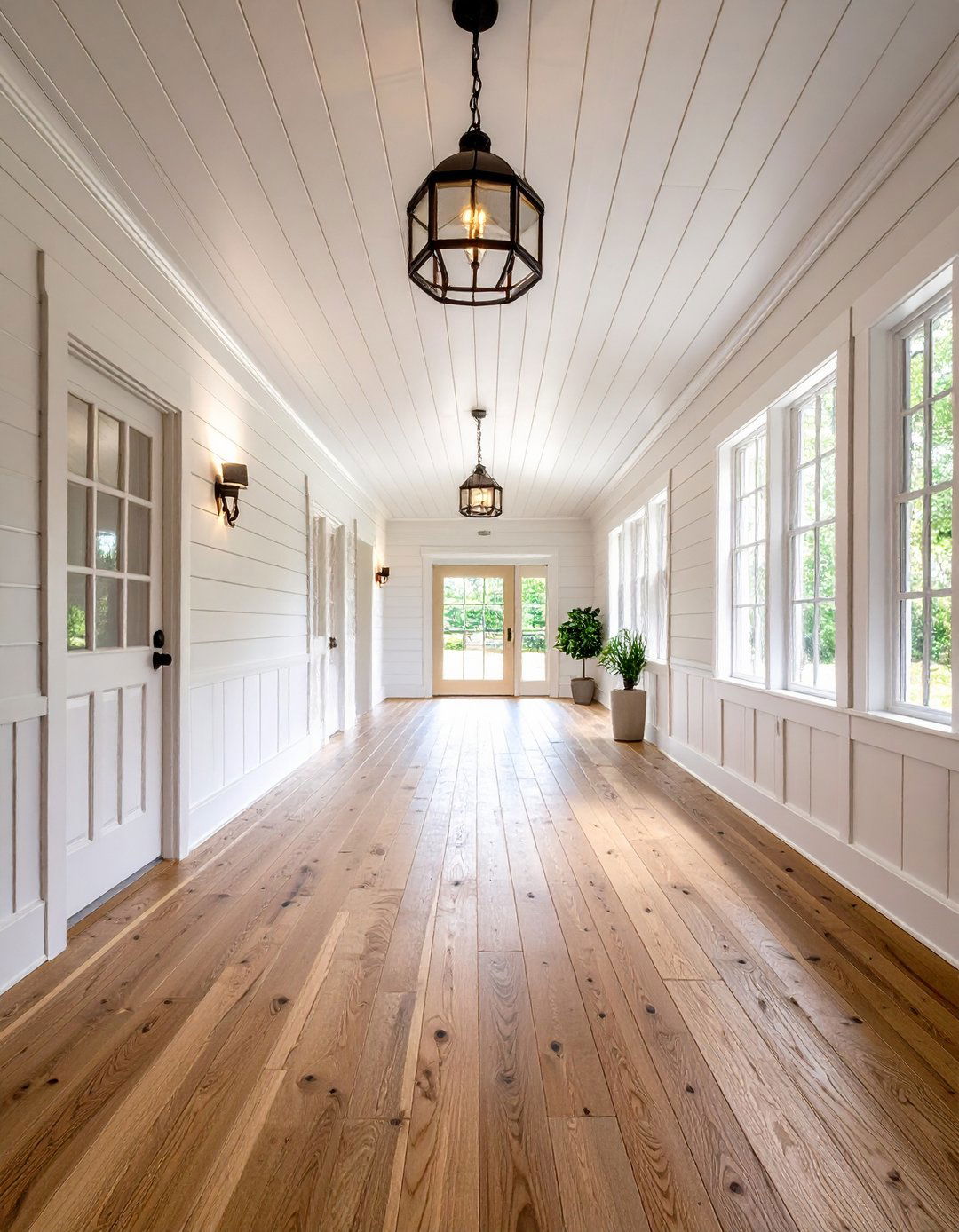
Applying white oak shiplap to a hallway ceiling adds warmth and texture to an otherwise utilitarian space. The horizontal lines help guide the eye forward, making narrow corridors appear longer. When matched to hardwood floors, this treatment fosters a continuous flow that visually expands the hallway, while natural light highlights the grain patterns of the wood.
4. Combine Shiplap with Vaulted Ceiling Beams
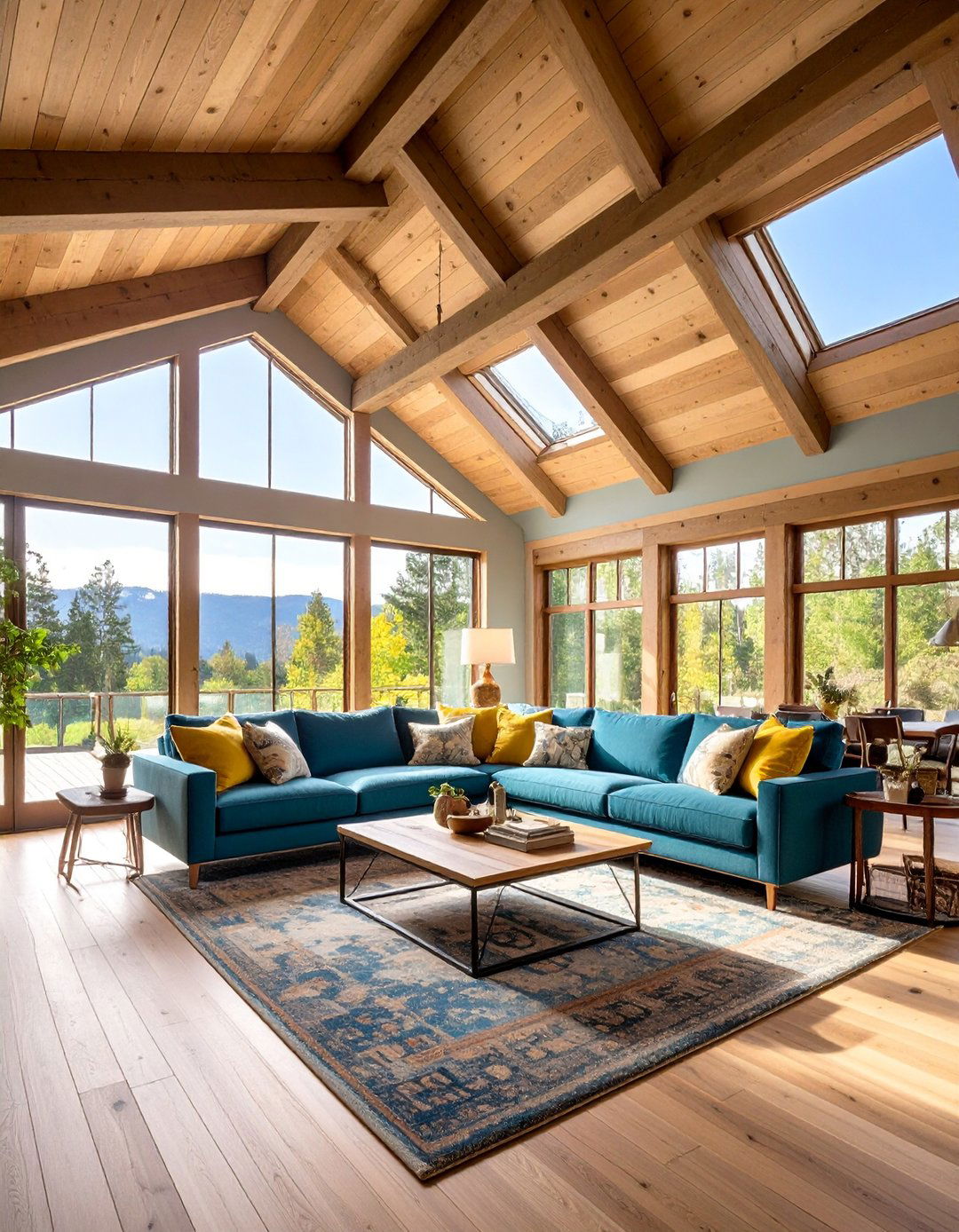
In vaulted ceilings, shiplap planks laid between exposed beams accentuate soaring architecture. The alternating planes of wood and open space enhance the ceiling’s height, while natural light pouring in from clerestory windows emphasizes the texture of the boards. This approach balances rustic appeal with airy spaciousness, ideal for living rooms and great rooms.
5. Grey-Painted Shiplap Ceiling in White Kitchen
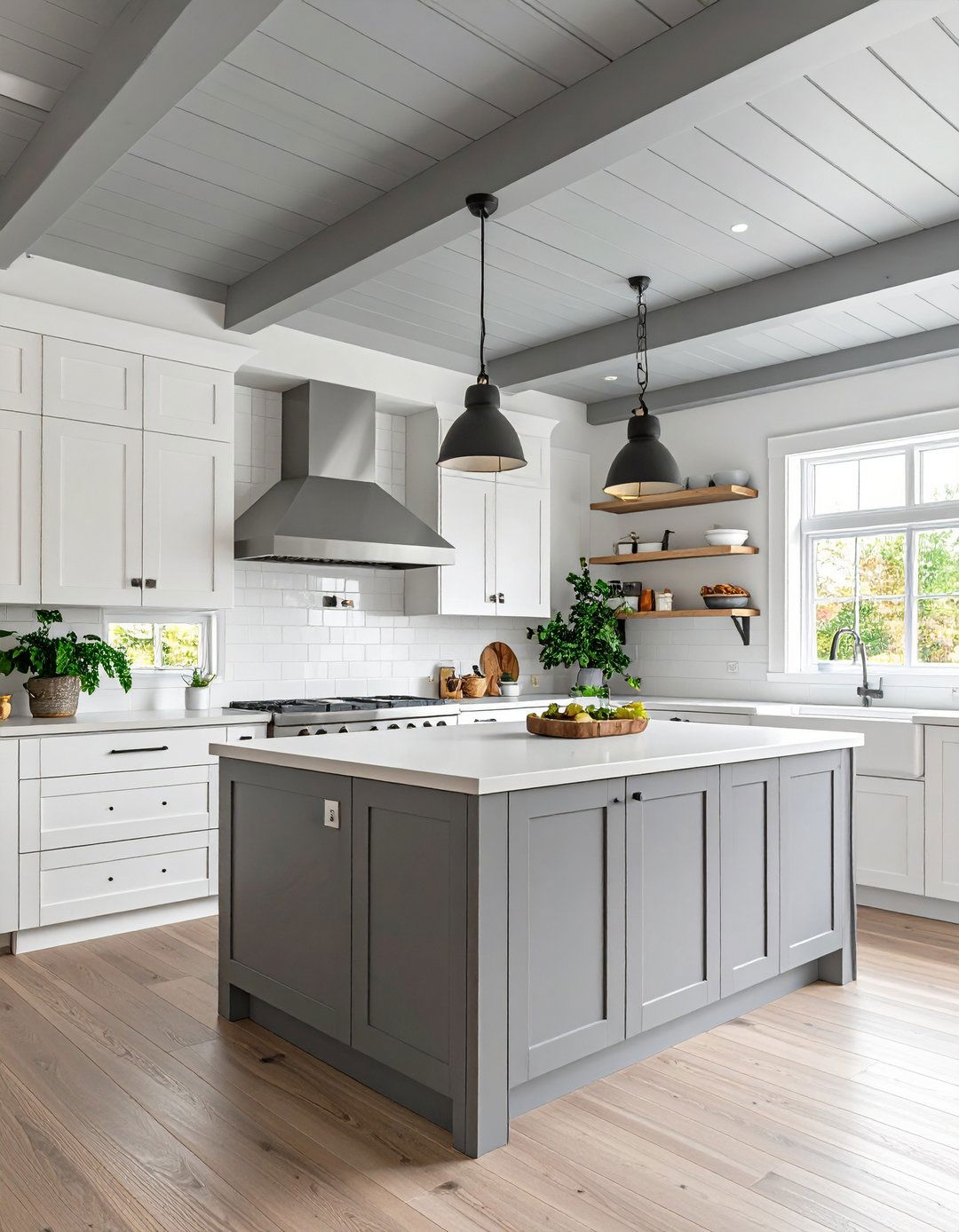
Ditch the all-white look and paint your shiplap ceiling a soft grey to harmonize with neutral cabinetry and hardwood floors. Grey ceilings lend depth and coziness to a bright kitchen, while still maintaining a light, airy feel. Use crisp white trim along walls and cabinetry to preserve contrast and prevent the grey from feeling heavy.
6. Cedar Beams over Grey-Painted Shiplap
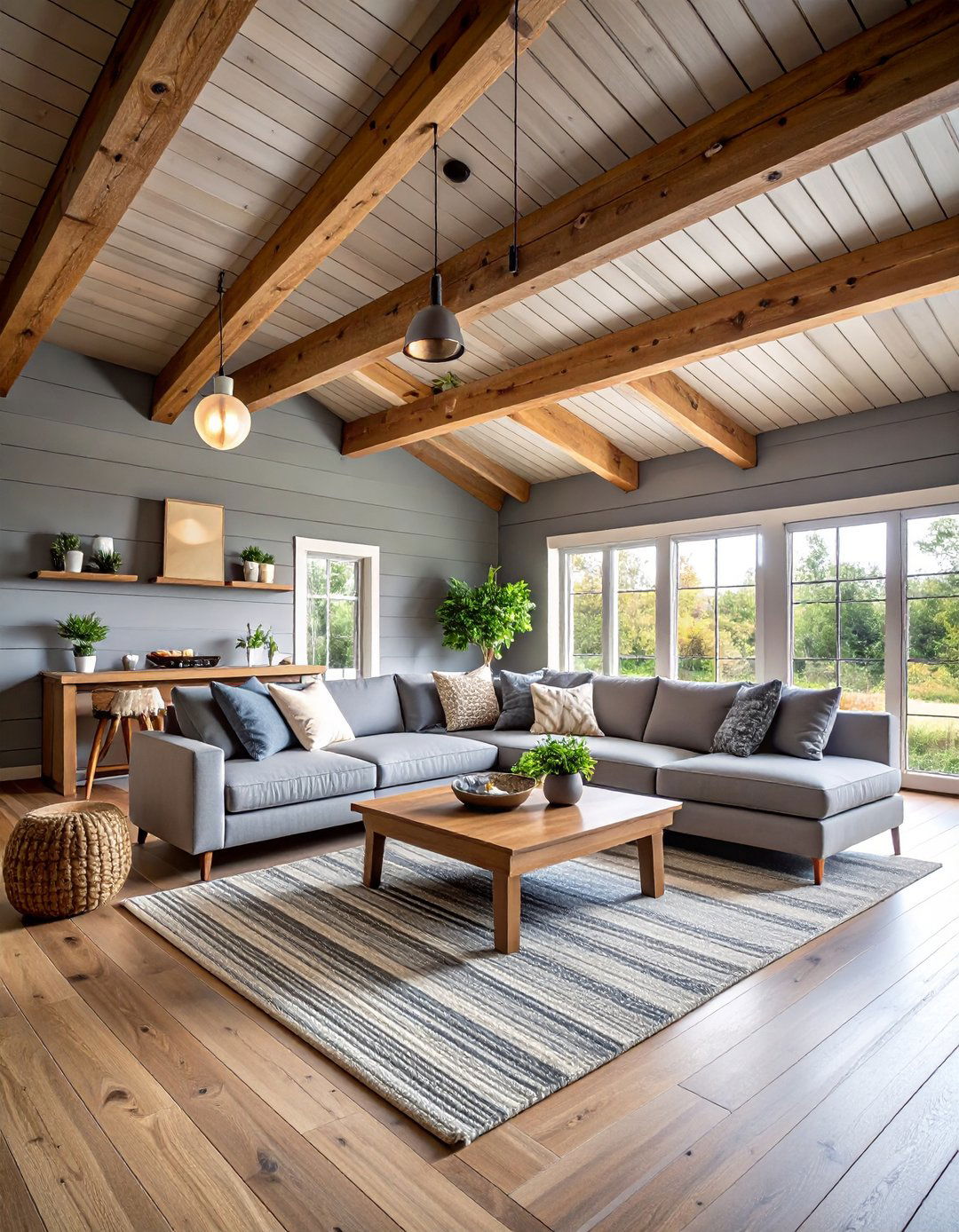
For a cozy living room, paint shiplap boards in a muted grey and top them with warm cedar beams. The interplay of cool grey and honey-toned cedar creates a balanced, inviting atmosphere. Accent the palette with grey furnishings and wood-toned décor to reinforce the harmonious scheme.
7. White Shiplap Ceiling with Black Island
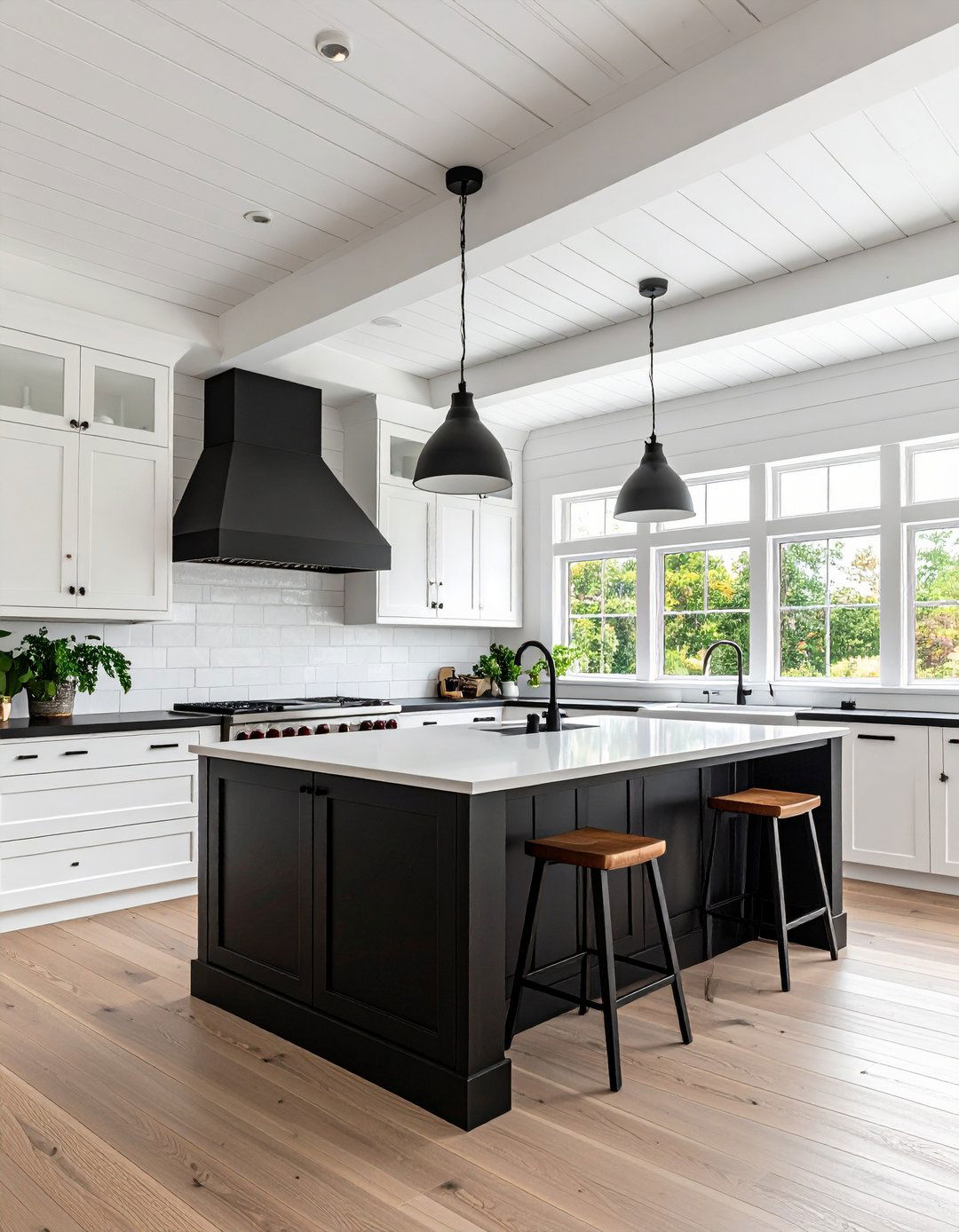
In an open-plan kitchen, a white shiplap ceiling paired with a bold black island anchors the space. The high-contrast elements—white overhead and dark on the ground—create dynamic visual layers. Incorporate brick or tile backsplash to introduce another texture and unify the palette through repeating accent colors.
8. Stained Shiplap for Rustic Warmth
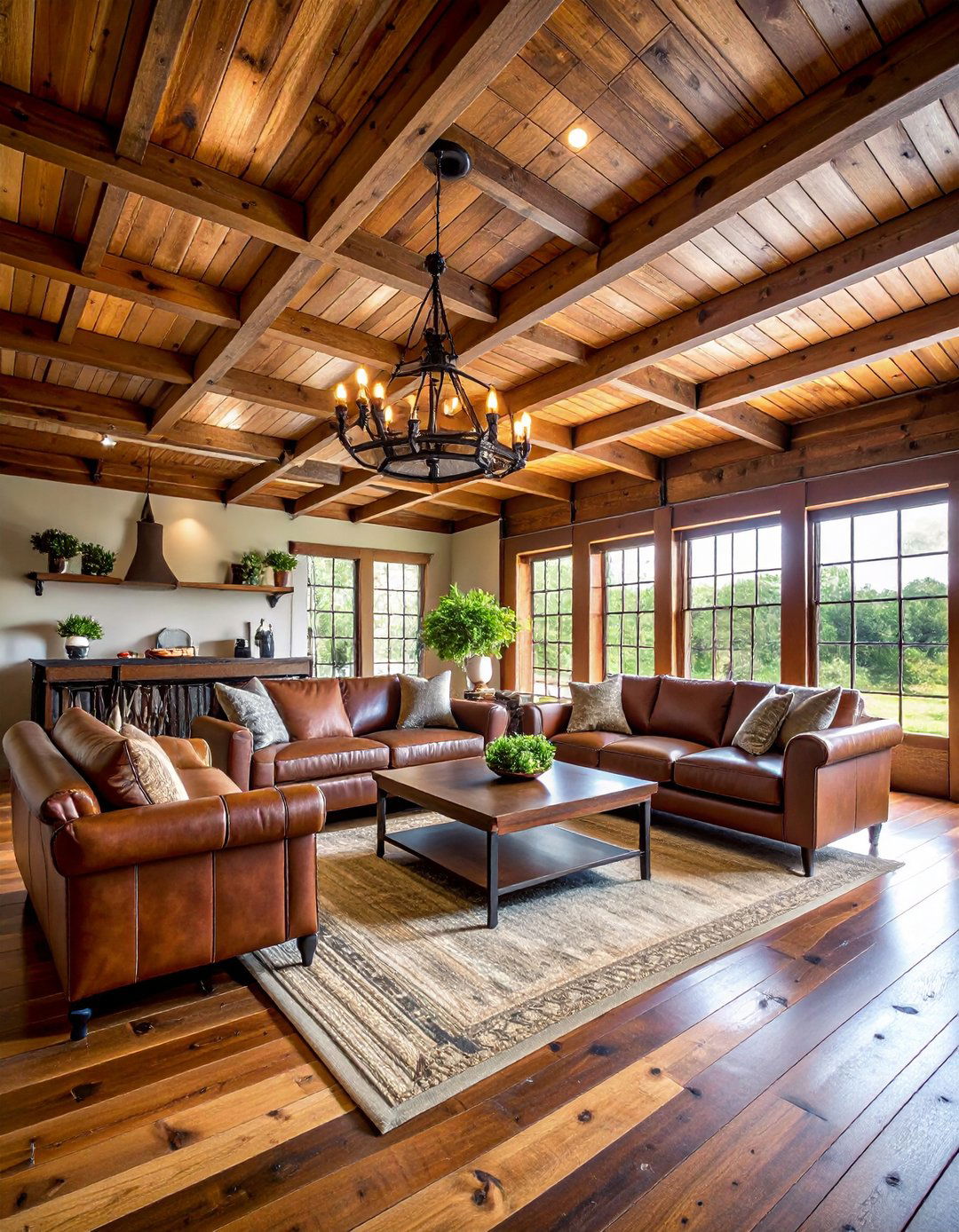
Opting for a darker wood stain on your shiplap ceiling infuses a room with organic warmth. Rich stains highlight the natural grain and knots of the boards, imparting a cozy cabin-like ambiance. This treatment pairs beautifully with leather furnishings, earth-toned textiles, and wrought-iron fixtures to complete a rustic aesthetic.
9. Diagonal Shiplap Pattern
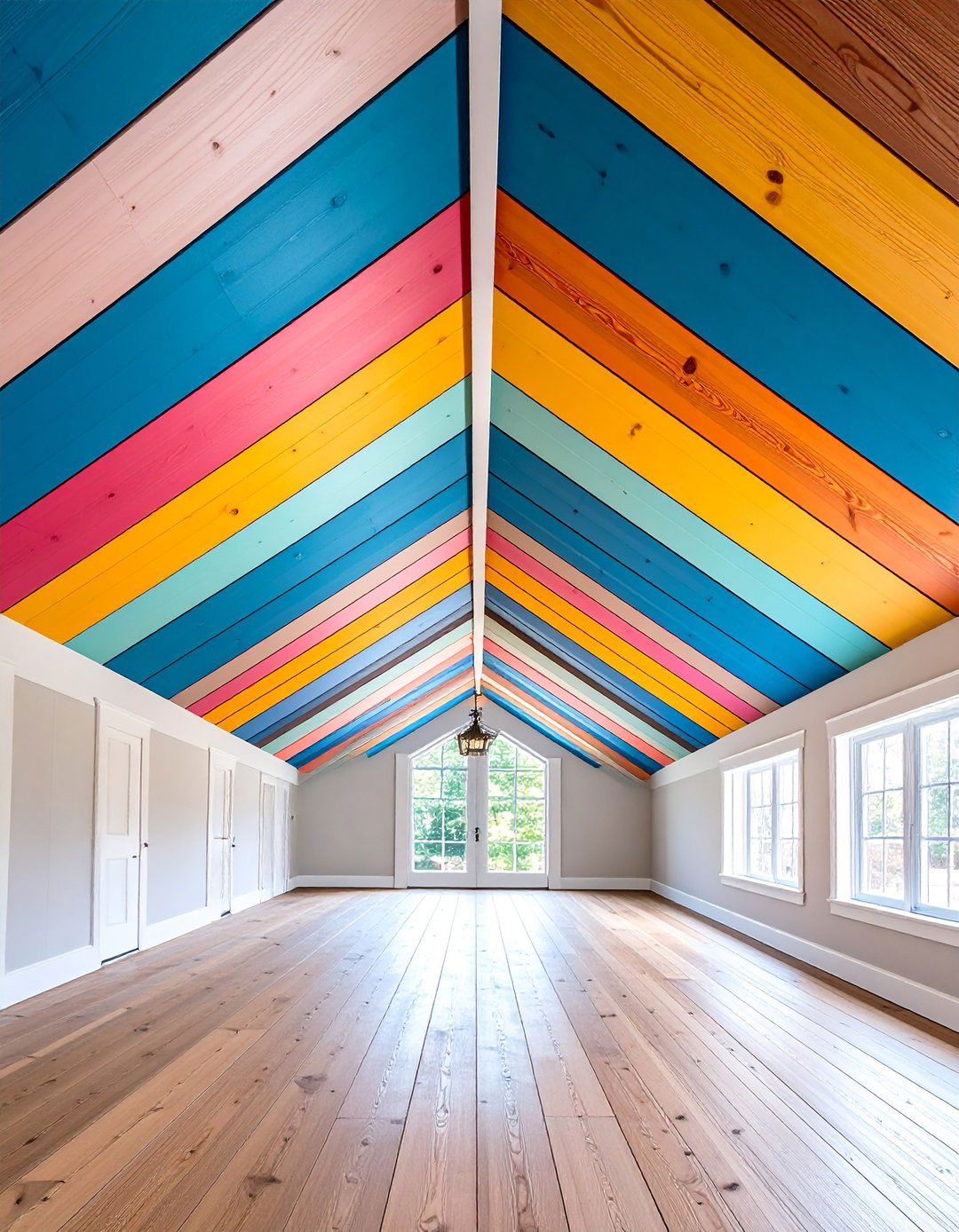
Breaking from tradition, install shiplap boards at a 45° angle to create a chevron or herringbone effect. This diagonal layout adds visual intrigue and can make ceilings appear both wider and taller. Planning and precision cuts are essential, but the dynamic pattern delivers a high-impact focal point without additional décor.
10. Beadboard Accents with Shiplap
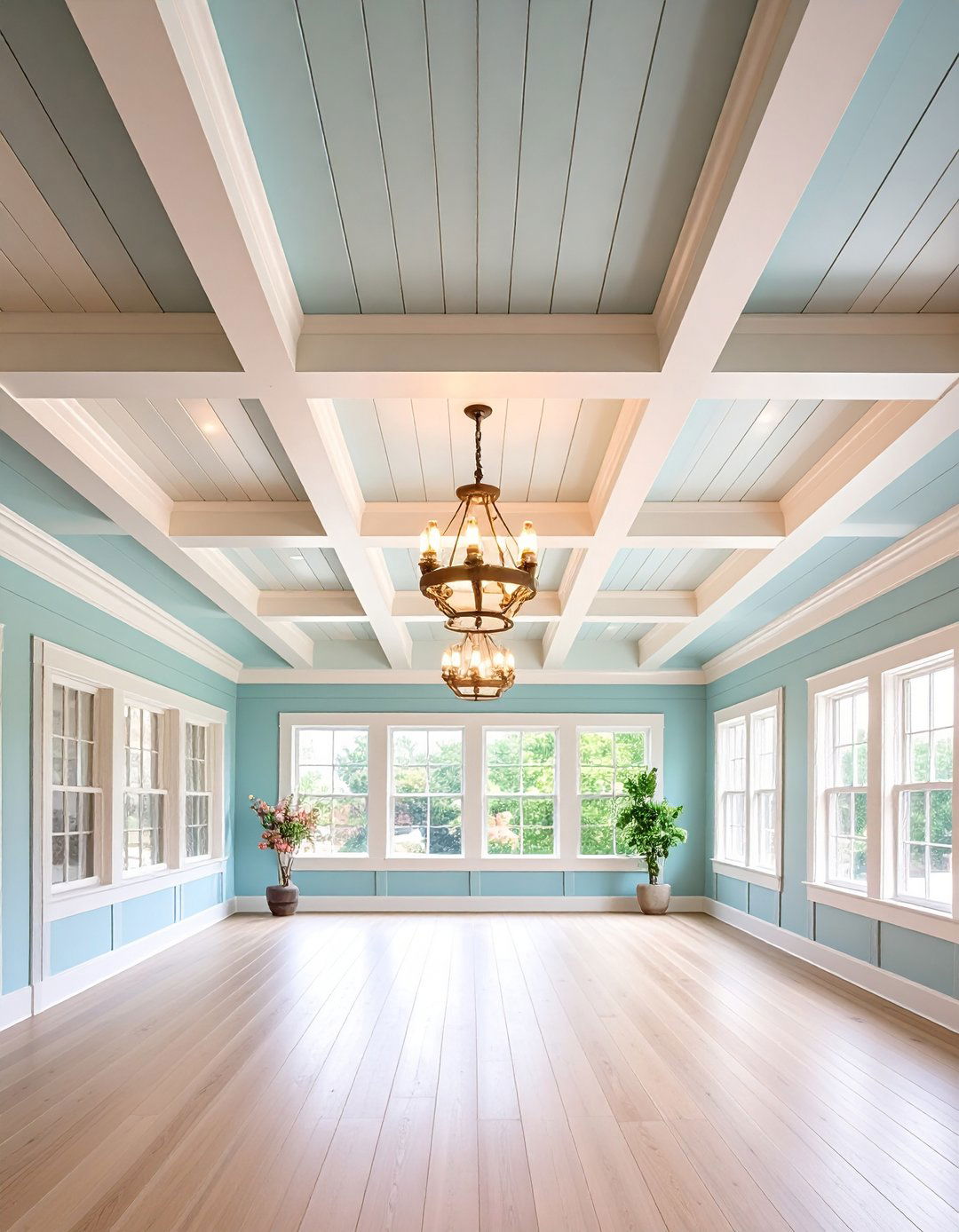
Combine classic beadboard with horizontal shiplap for a nuanced ceiling. Beadboard panels in tray ceiling wells lend subtle texture, while shiplap on the remaining surface reinforces depth. This layered approach recalls traditional cottage detailing, enhanced by a soft pastel paint palette or crisp white finish.
11. Shiplap in Bathroom for Subtle Statement
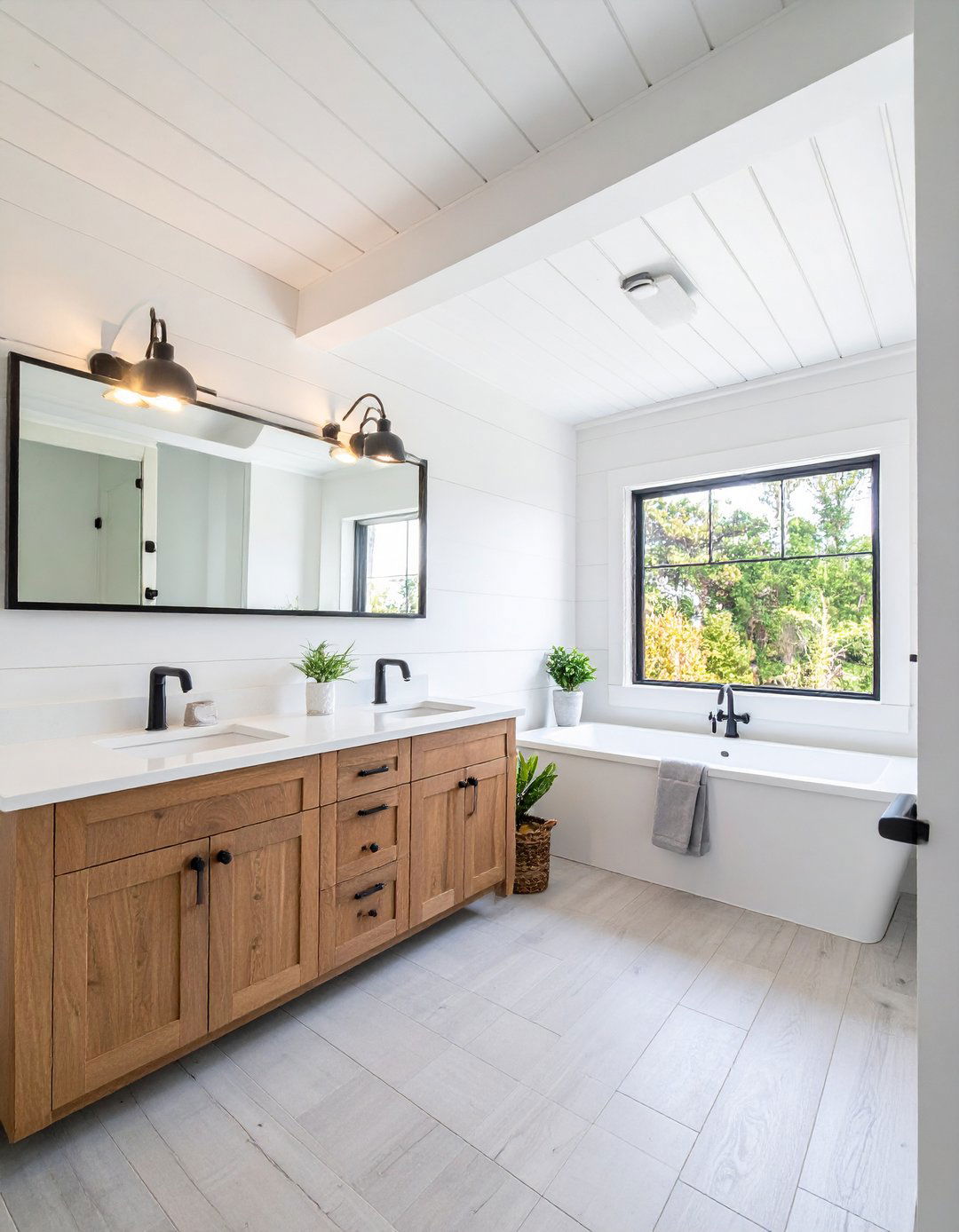
Adding shiplap to a bathroom ceiling brings understated character without overwhelming the space. Use moisture-resistant primed boards and paint them semi-gloss white to repel water. Pair with black hardware or natural stone tiles for contrast. This small update can dramatically elevate standard bathroom finishes.
12. Scandinavian Minimalist Shiplap Ceiling
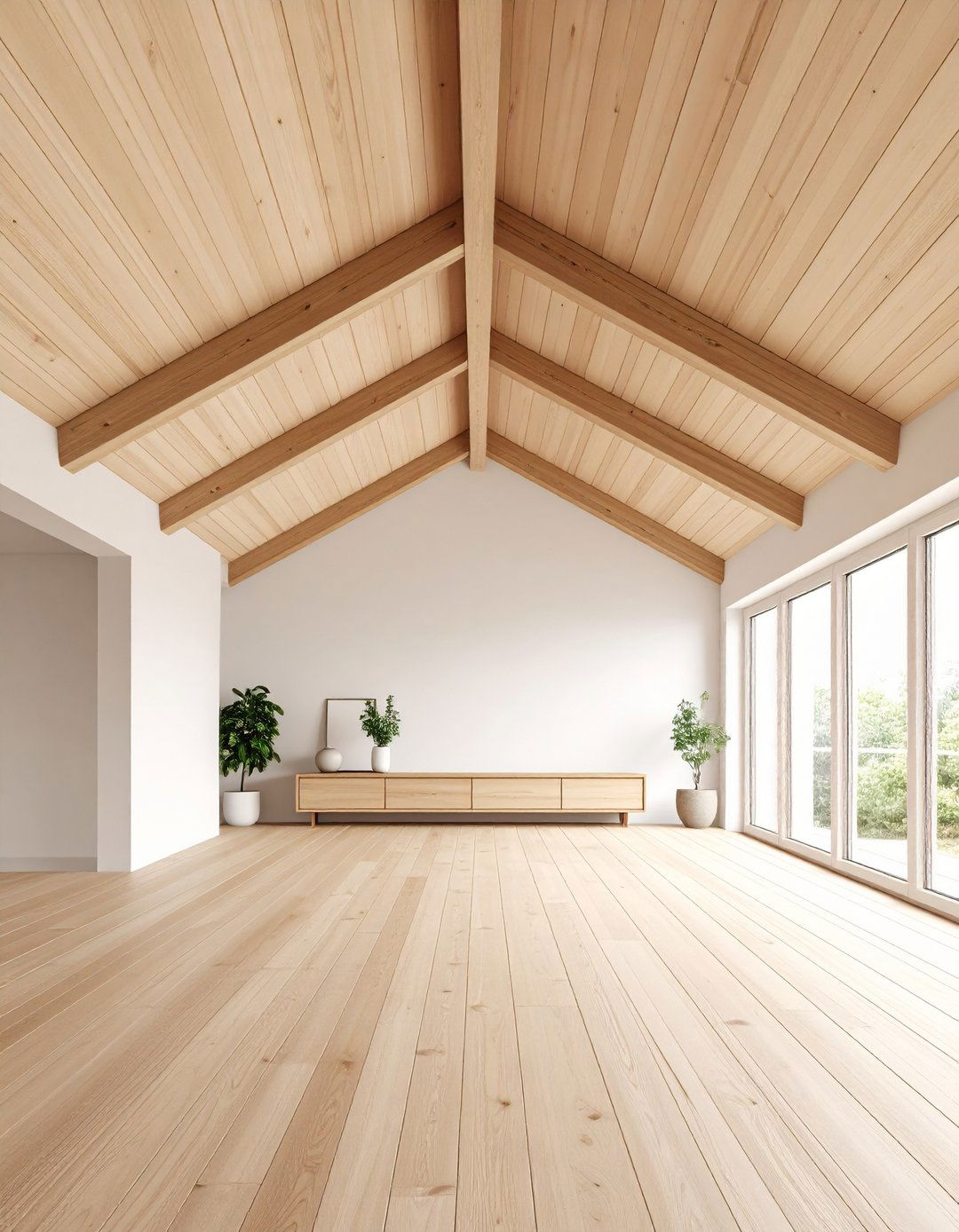
In minimalist interiors, use thin, evenly spaced shiplap boards in a pale finish to emphasize clean lines. The subtle grooves cast gentle shadows, adding dimension without busy patterns. Keep surrounding décor sleek and monochromatic to let the ceiling’s texture remain the room’s quiet hero.
13. Built-In Lighting Between Shiplap Boards

Integrate linear LED strips or recessed lights along shiplap seams to highlight the ceiling’s texture. The indirect glow accentuates each plank’s edge, creating a warm, ambient effect. This modern twist works particularly well in dining areas or hallways, where soft overhead lighting enhances mood.
14. Faux Beams over Shiplap
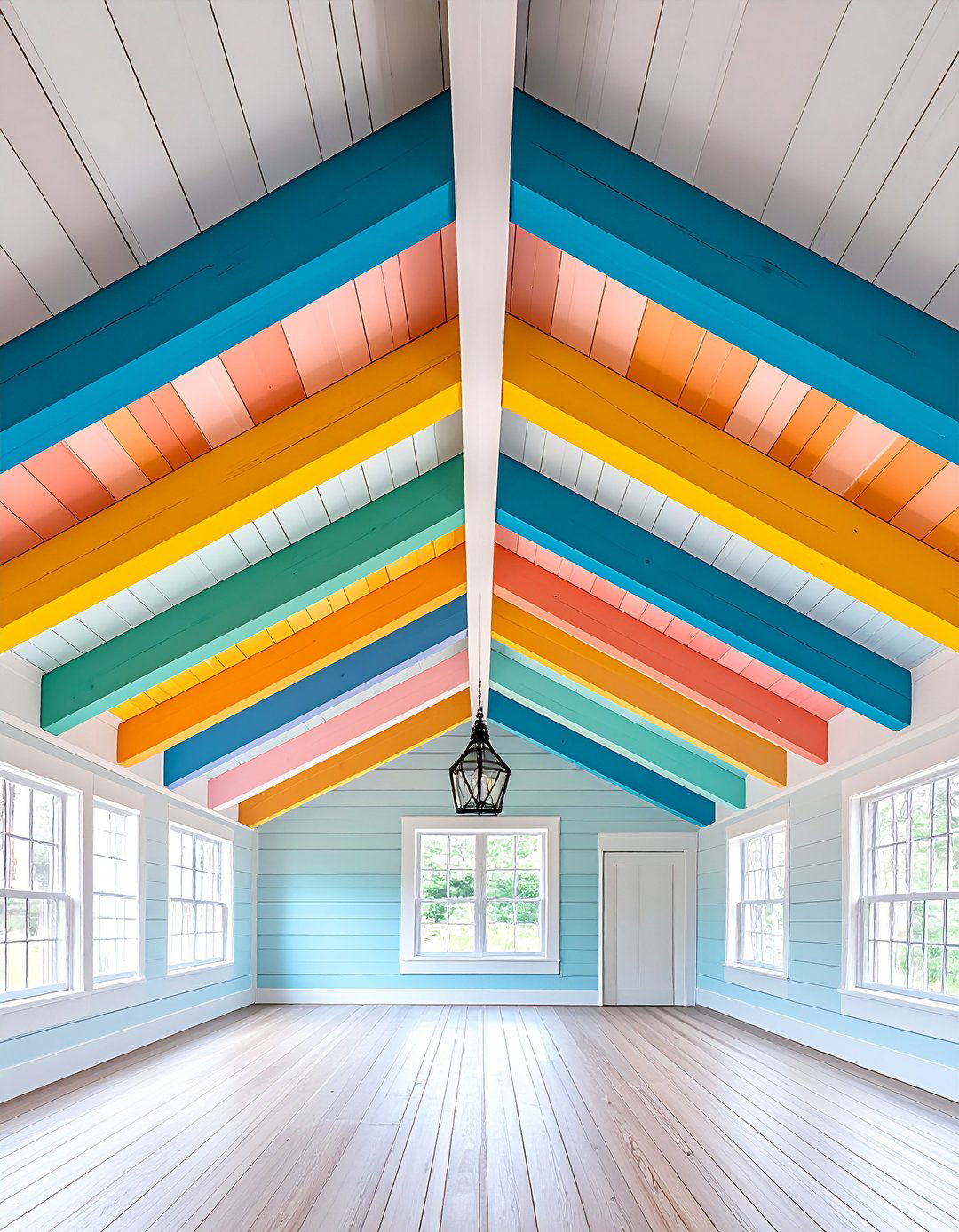
If structural beams aren’t an option, install faux shiplap-wrapped beams over a painted shiplap ceiling. Lightweight and customizable, these beam facades lend architectural interest without major construction. Match beam color to the shiplap’s stain or paint for a cohesive, labor-friendly install.
15. Color-Blocked Shiplap Ceiling
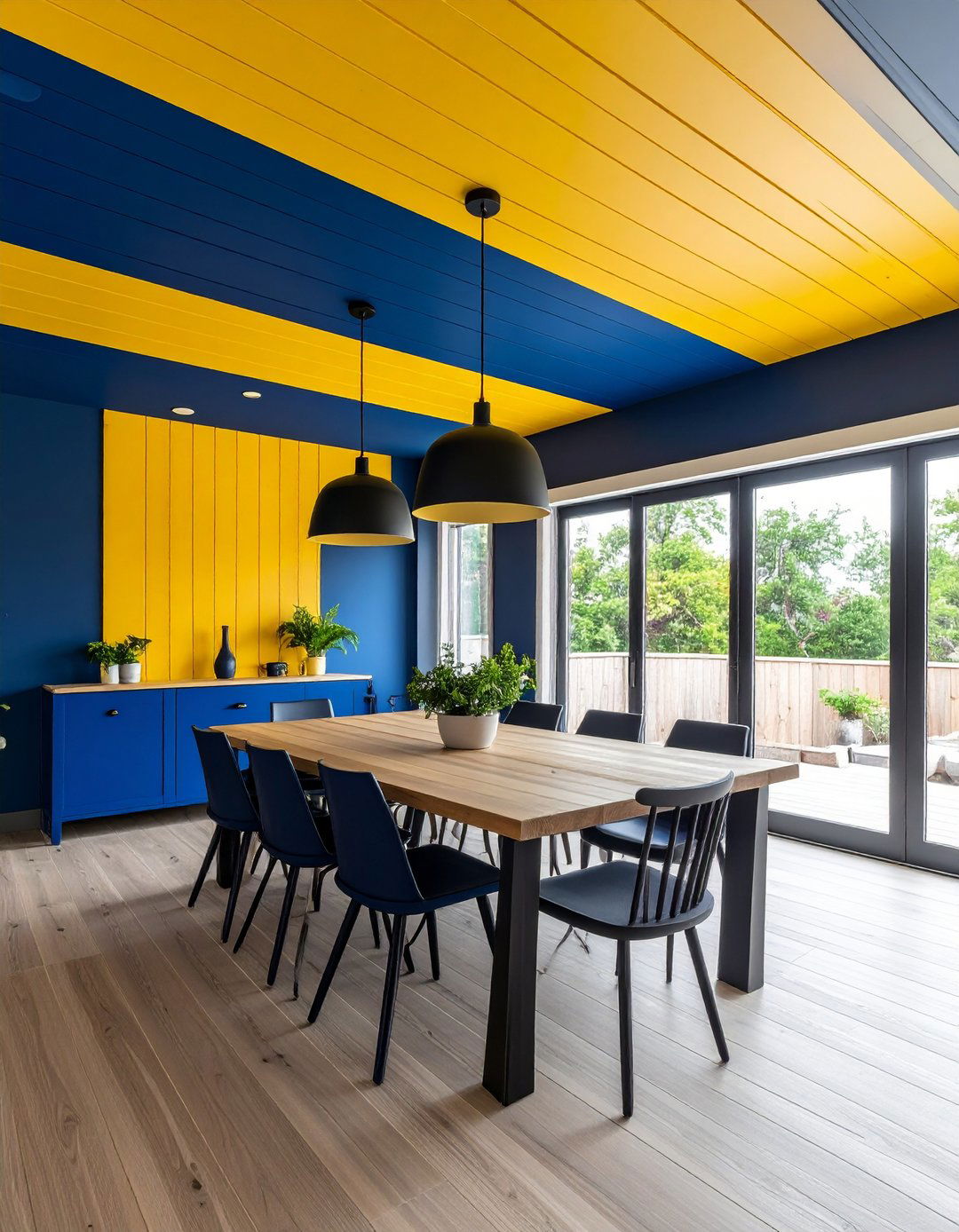
Make a bold statement by painting select shiplap panels in a vibrant hue—such as navy or mustard—while leaving the rest neutral. This playful approach draws the eye upward and introduces accent color without fully committing to a painted ceiling.
16. Mix Horizontal and Vertical Shiplap
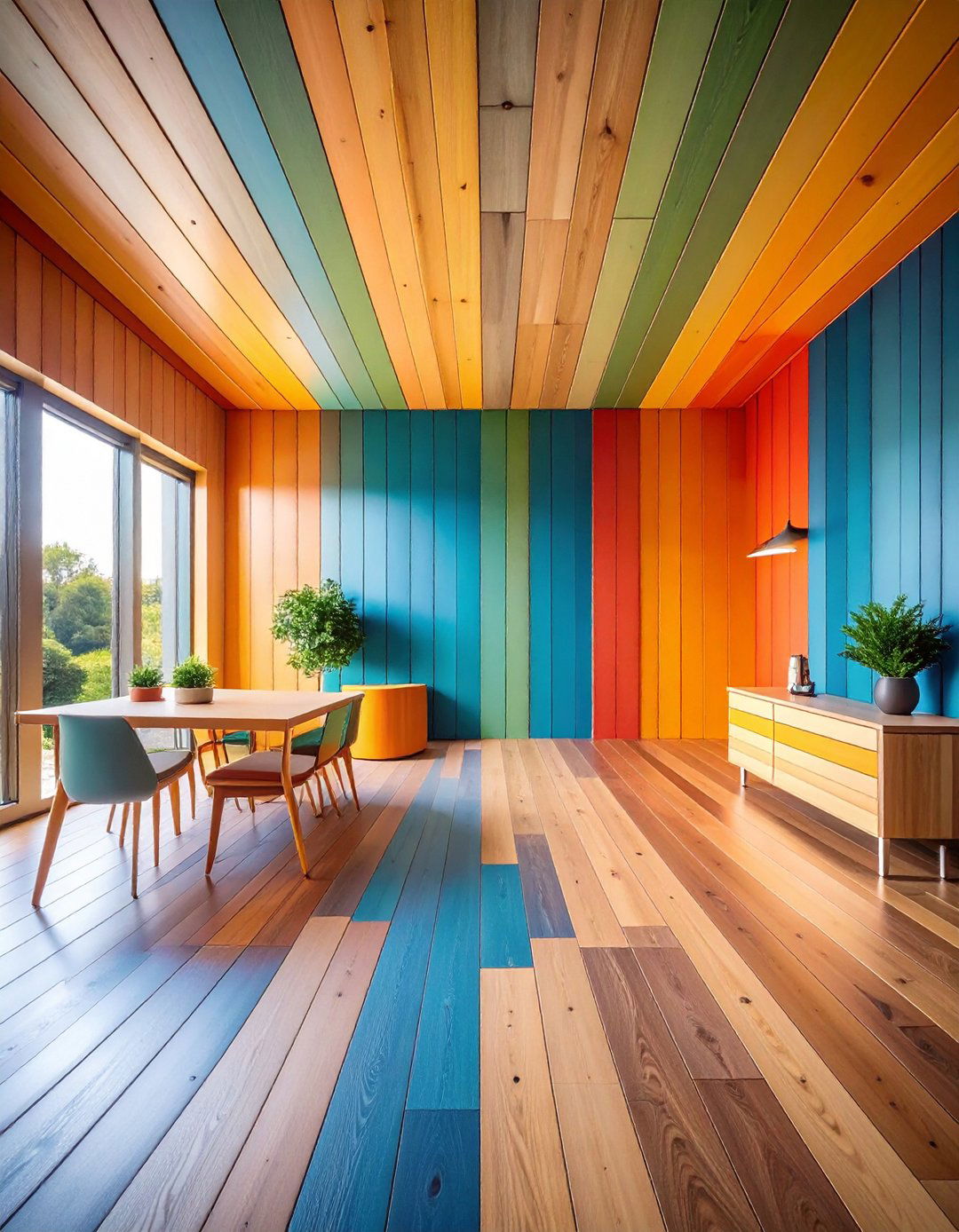
Alternate sections of horizontal shiplap with vertical board installations to delineate spaces. Vertical panels can emphasize height in entryways, while horizontal runs in adjoining rooms subtly widen the space. This directional shift offers architectural variety in open-plan homes.
17. Outdoor Porch Shiplap Ceiling
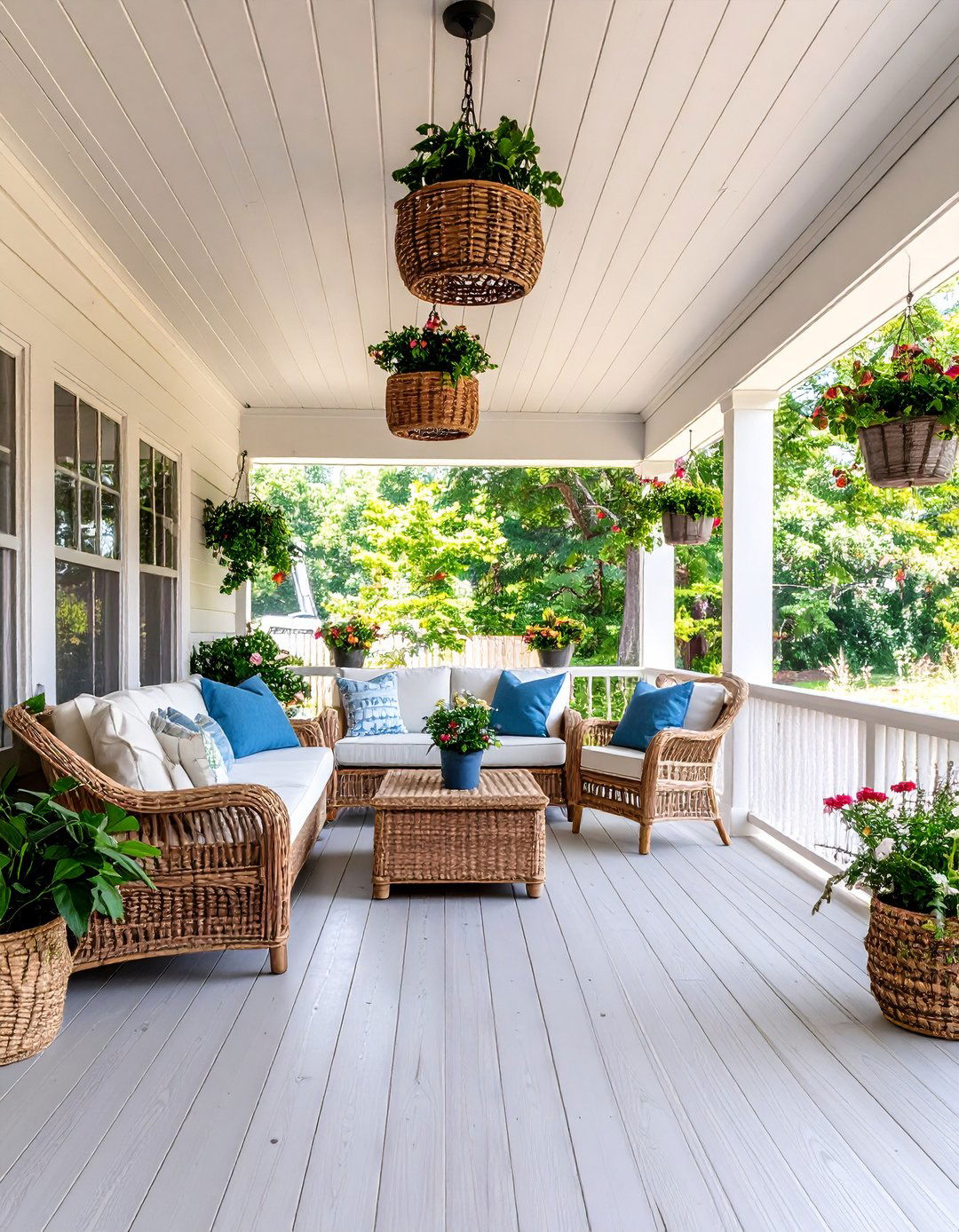
Extend shiplap to covered outdoor areas—porches or breezeways—to create continuity from indoors to out. Use exterior-grade boards and paint them a light color to reflect natural light. Complement with wicker furniture and hanging planters for a cohesive outdoor living space.
18. Crossbeams over Shiplap for Depth
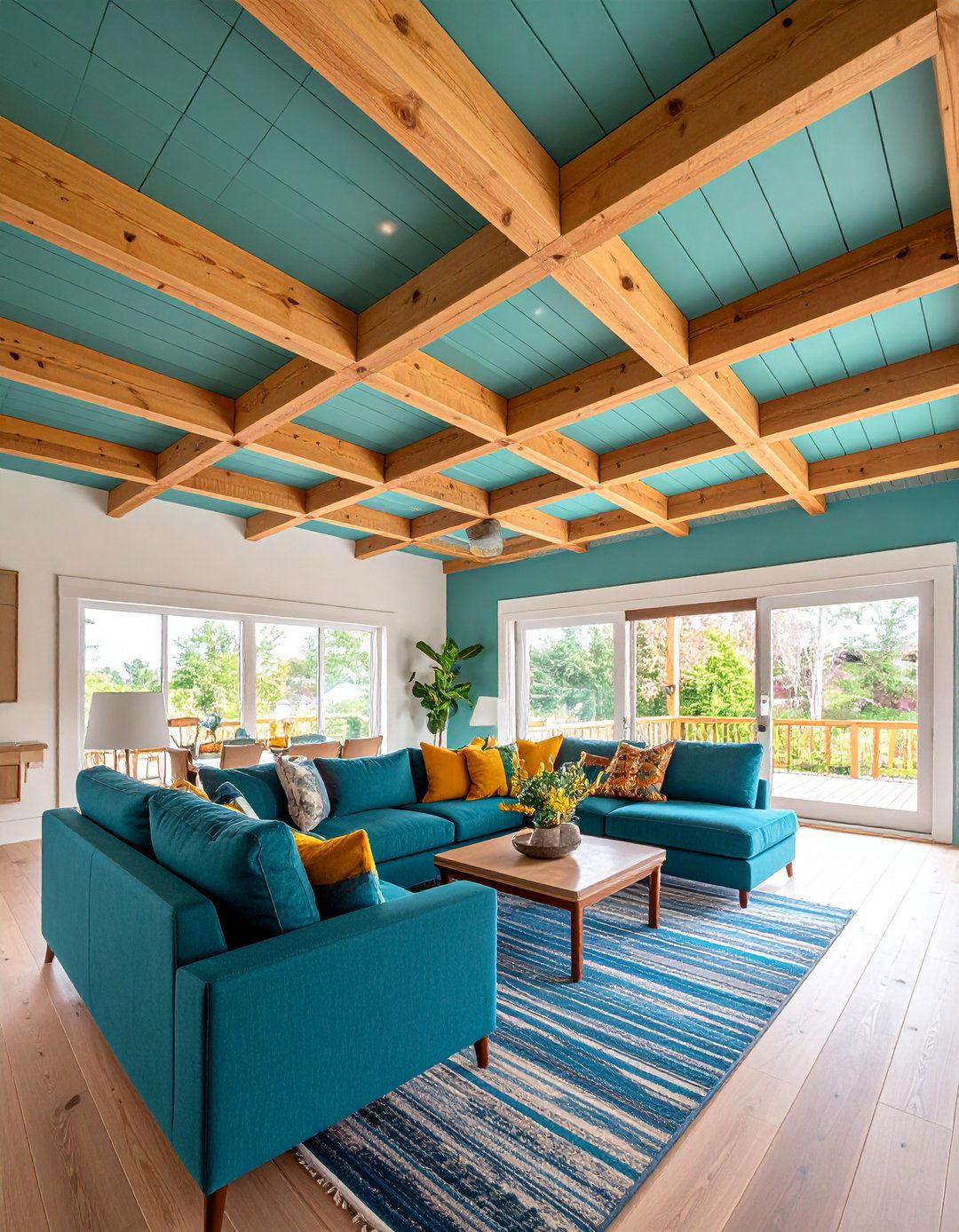
Install wood crossbeams perpendicular to shiplap boards to introduce a grid-like ceiling feature. The beams cast shadow lines and break up the plane, adding architectural depth. This technique suits coffered-style designs, elevating even simple rooms.
19. Pre-Primed Boards for a Quick Install
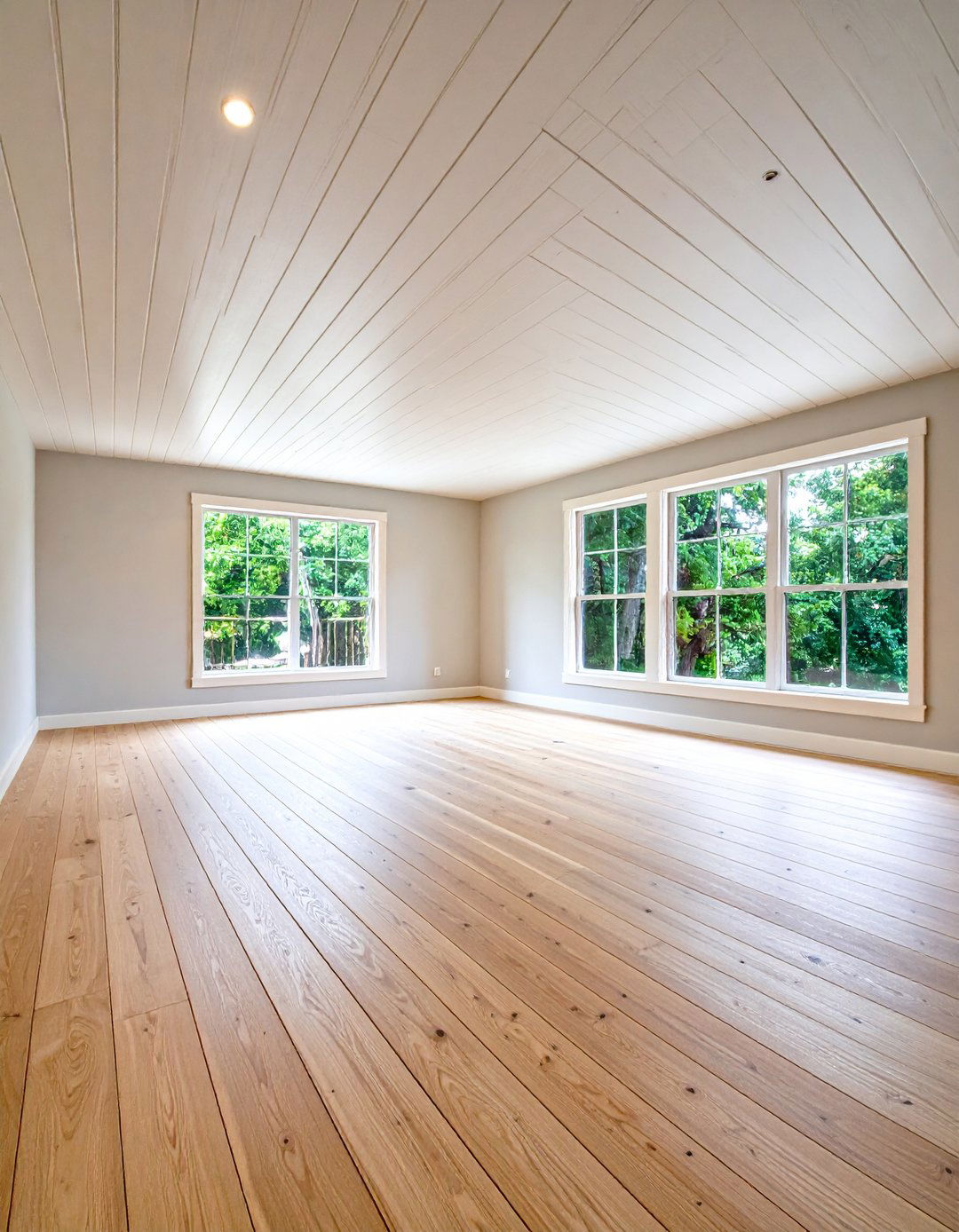
Save time by choosing factory-primed shiplap planks. Pre-primed boards eliminate onsite priming and sanding, enabling a faster install and a smoother finish. Follow with two coats of topcoat paint for durability, especially in high-moisture rooms.
20. Shiplap Ceiling with Skylights
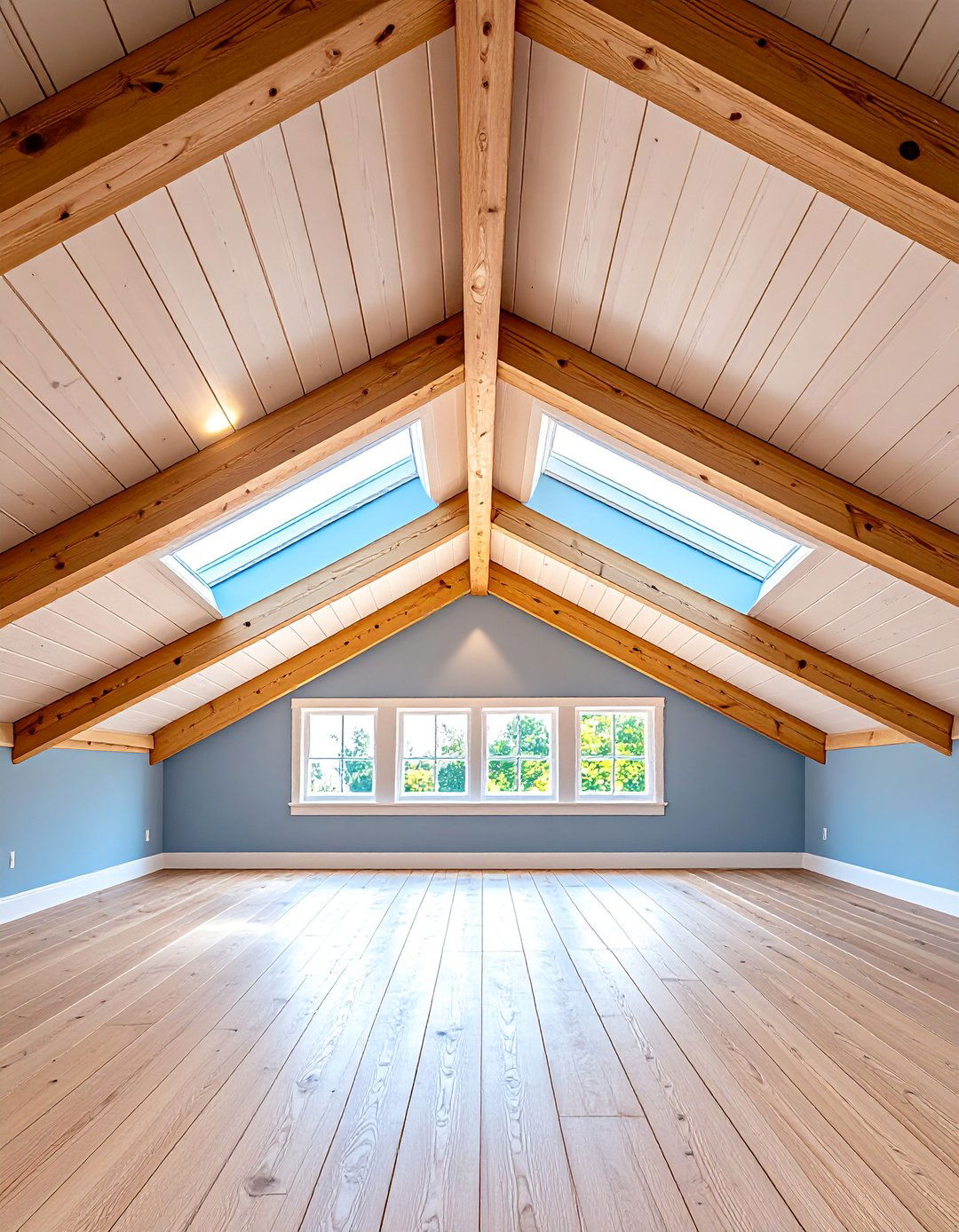
Incorporate skylights into a shiplap ceiling to marry natural light with texture. White shiplap surrounding a skylight brightens the overhead plane, while careful trim work ensures a neat transition. Skylights not only illuminate the room but also highlight the ceiling’s dimensional grooves.
Conclusion:
Shiplap ceilings offer boundless design opportunities to redefine a room’s character—whether you crave rustic warmth, sleek minimalism, or bold color statements. By mixing board orientations, finishes, and architectural elements like beams and skylights, you can customize the overhead surface to complement any style. With careful planning and consideration of materials and installation methods, a shiplap ceiling makeover can elevate your space, drawing the eye upward and infusing your home with texture, light, and personality.



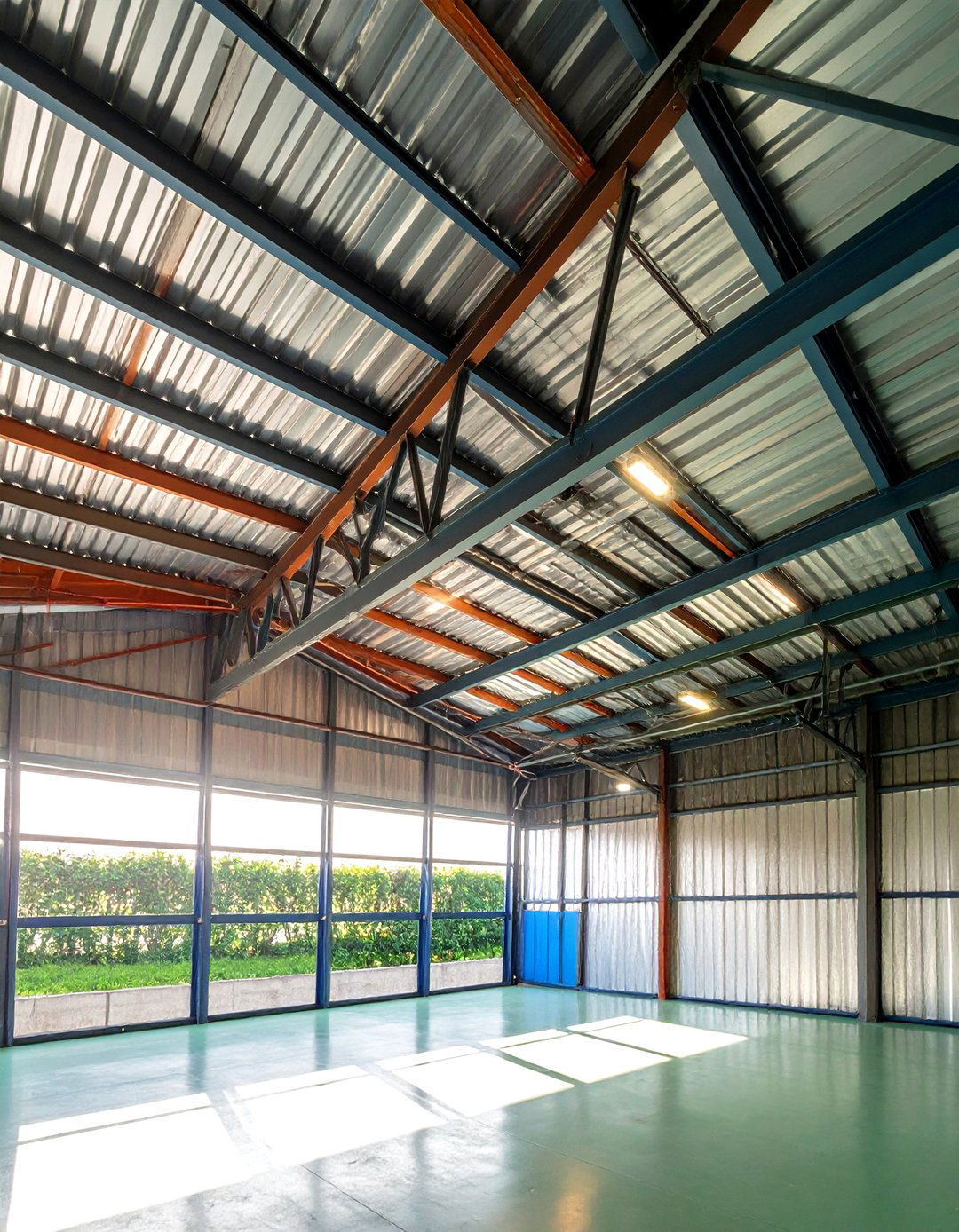
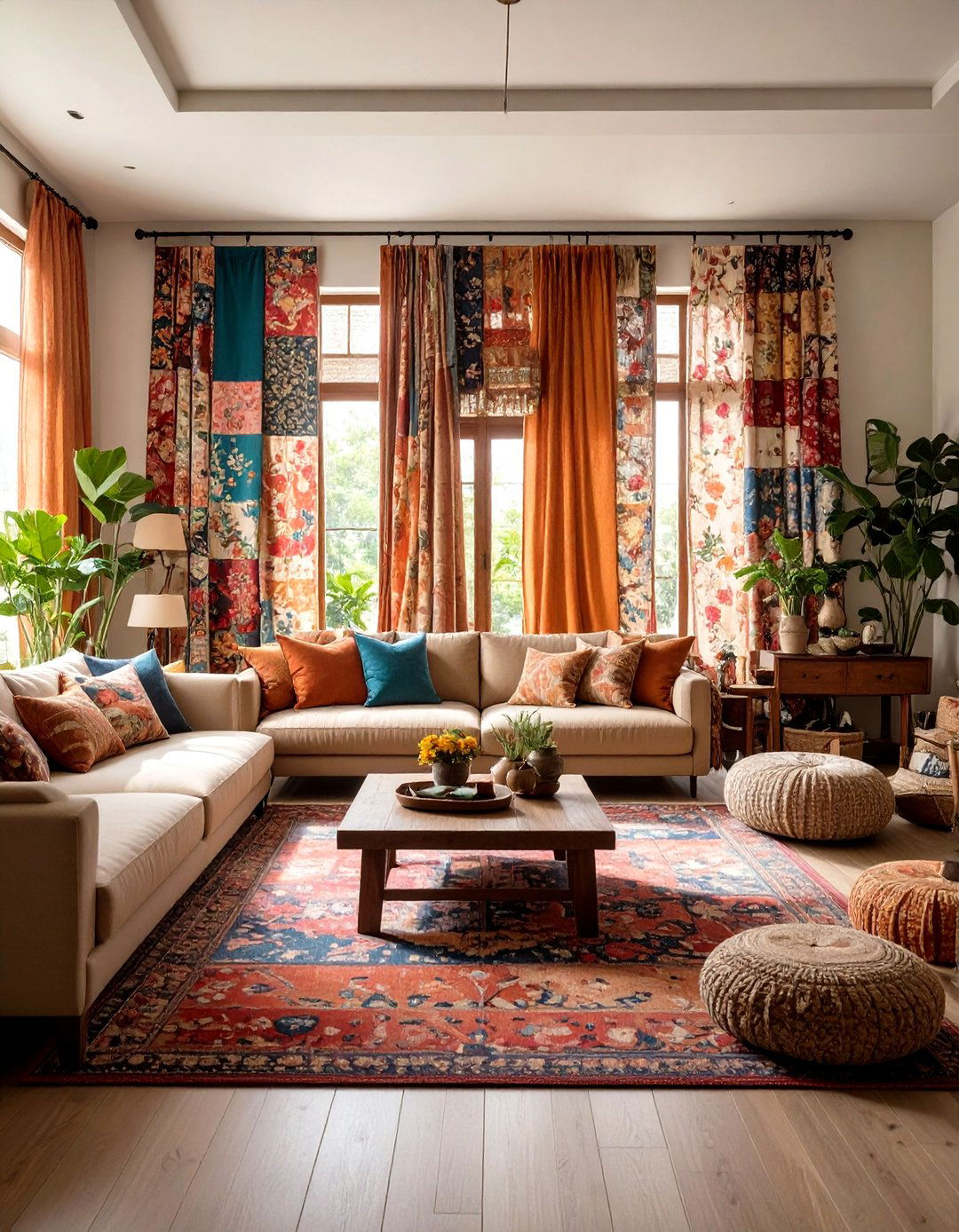

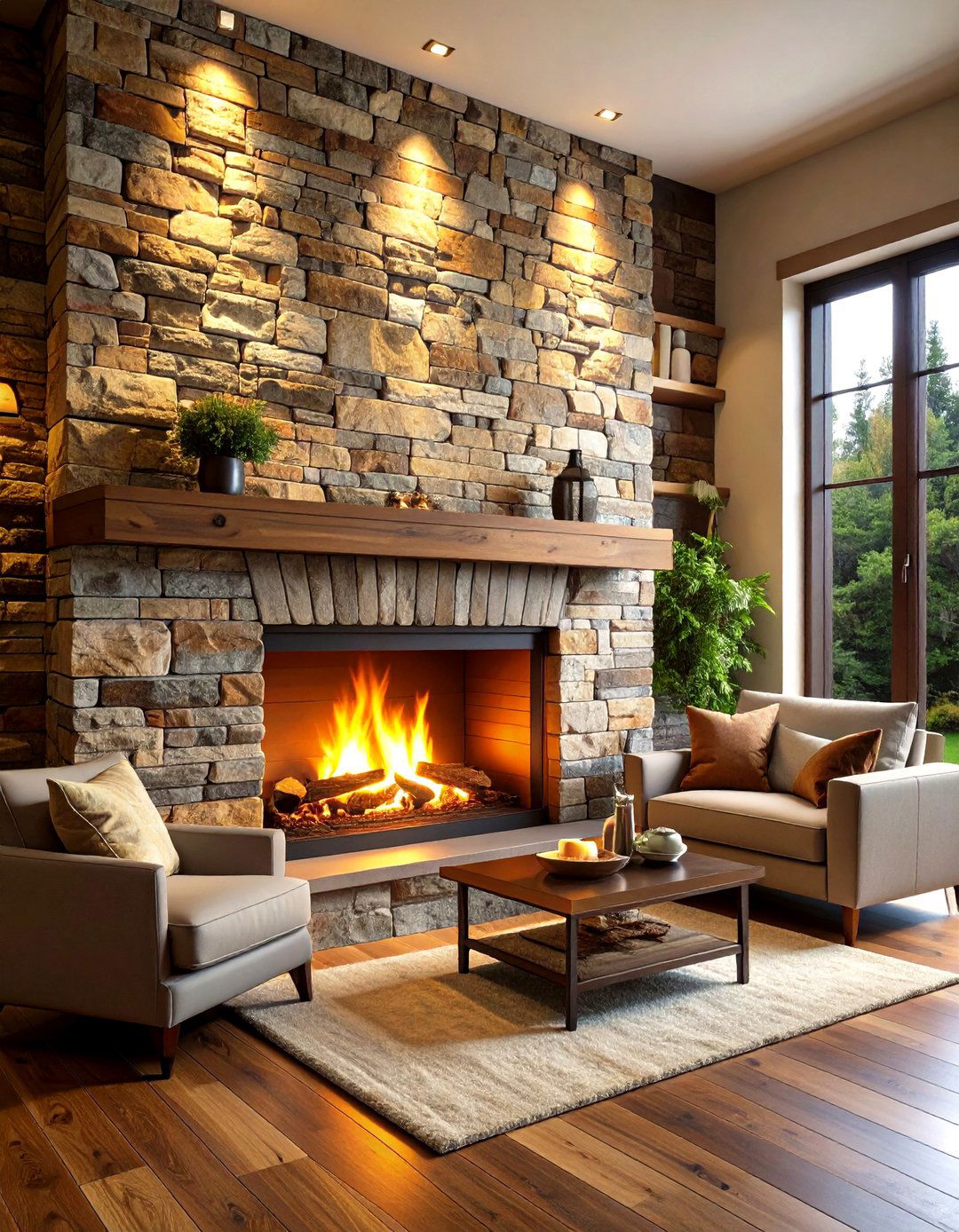
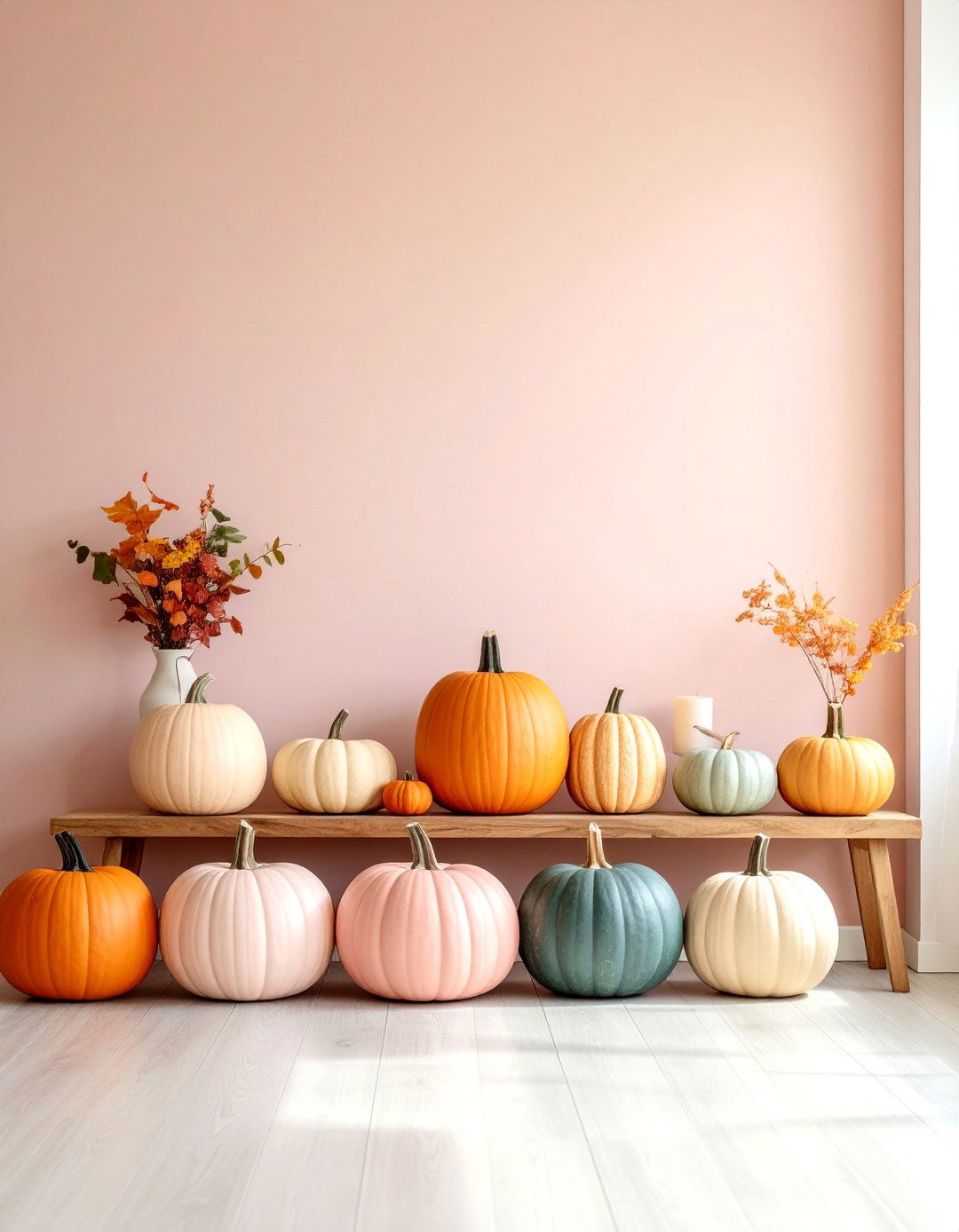
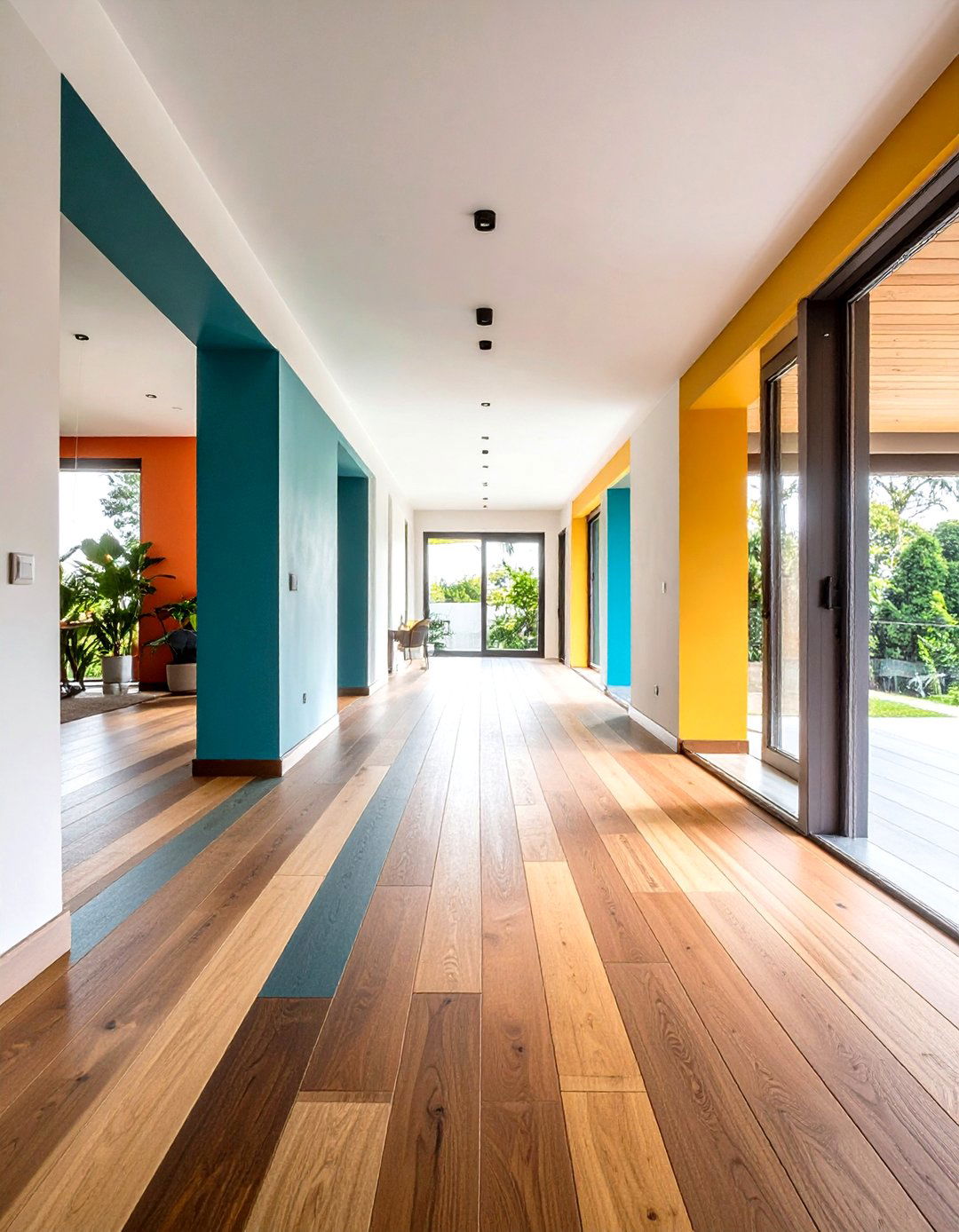
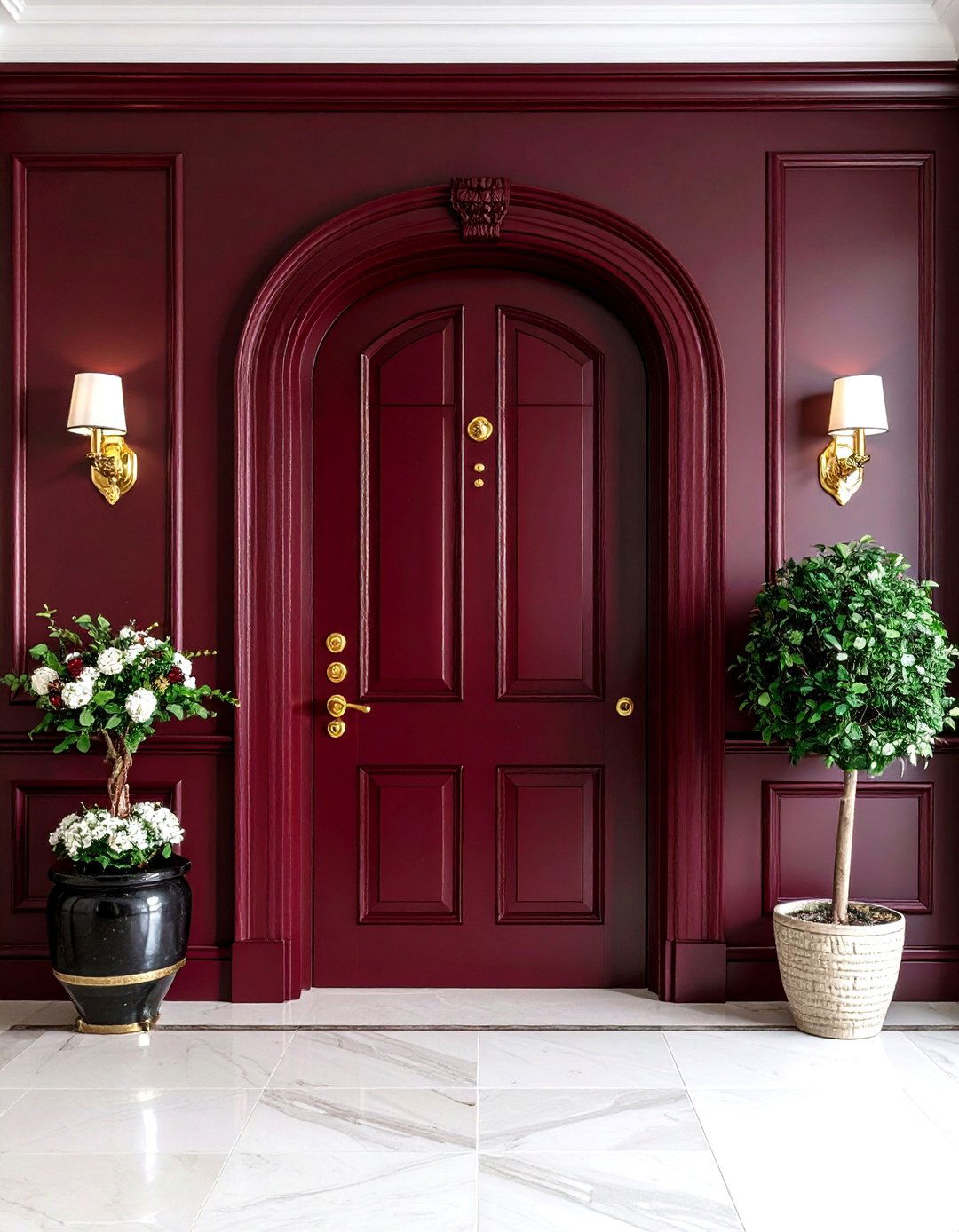
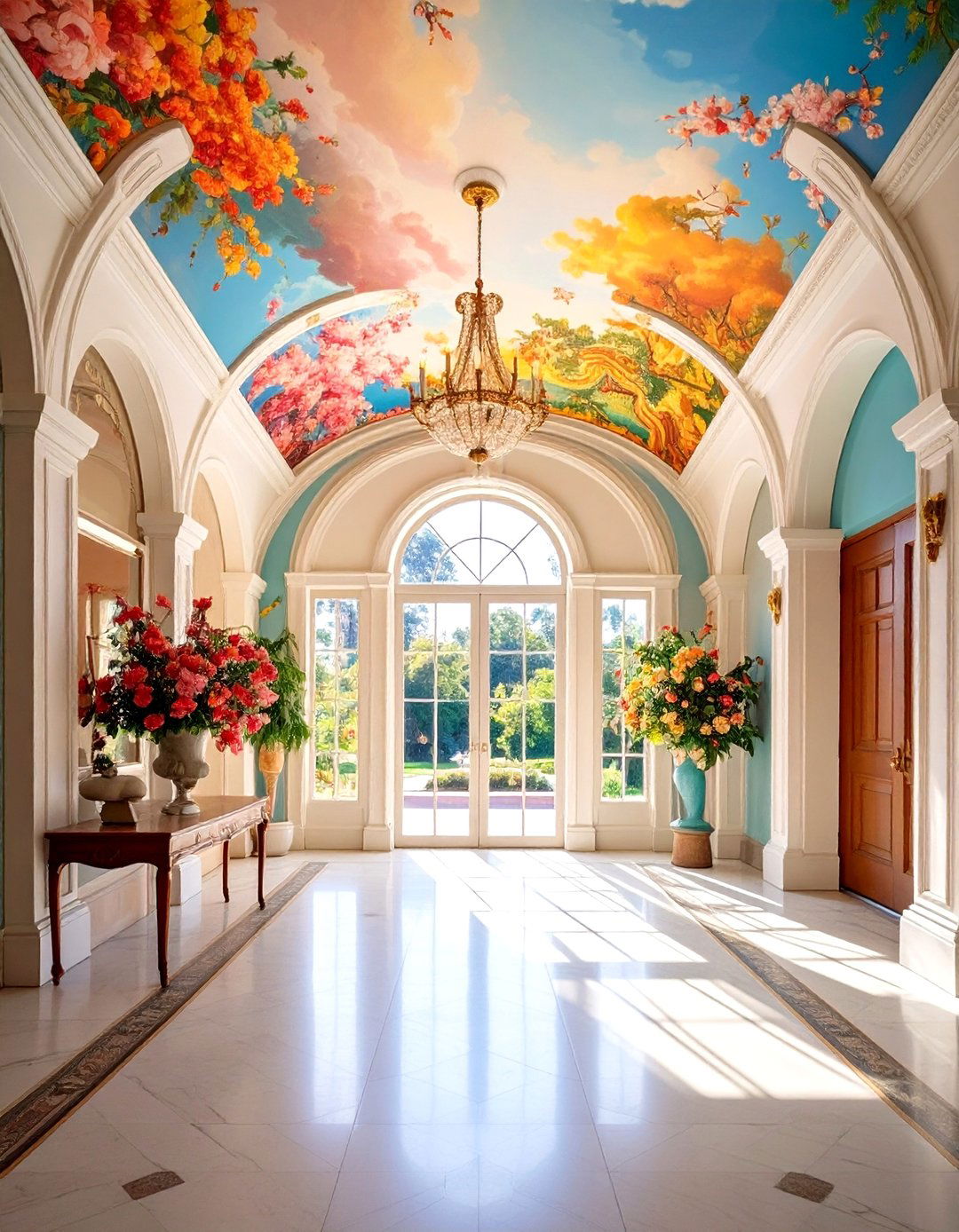
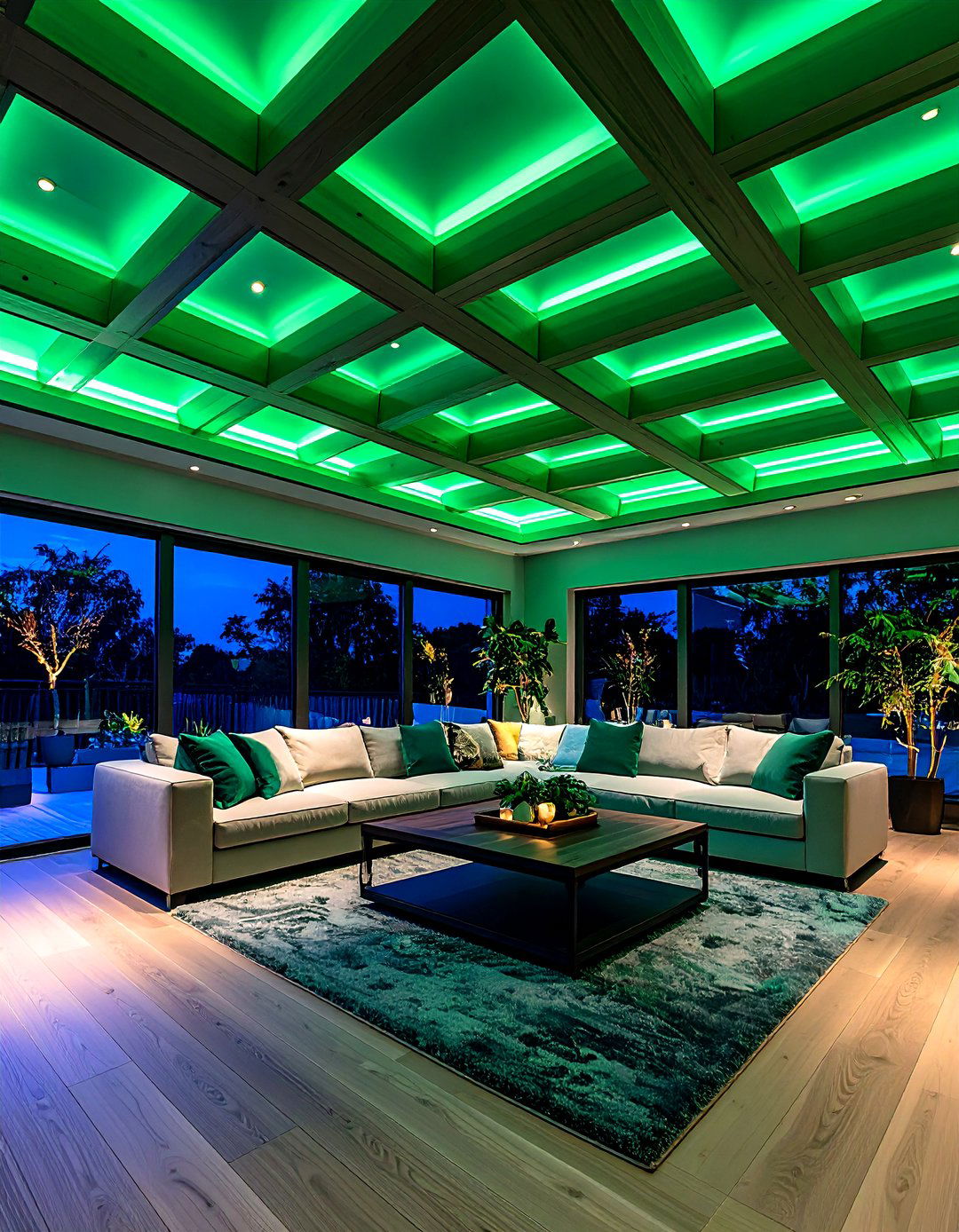
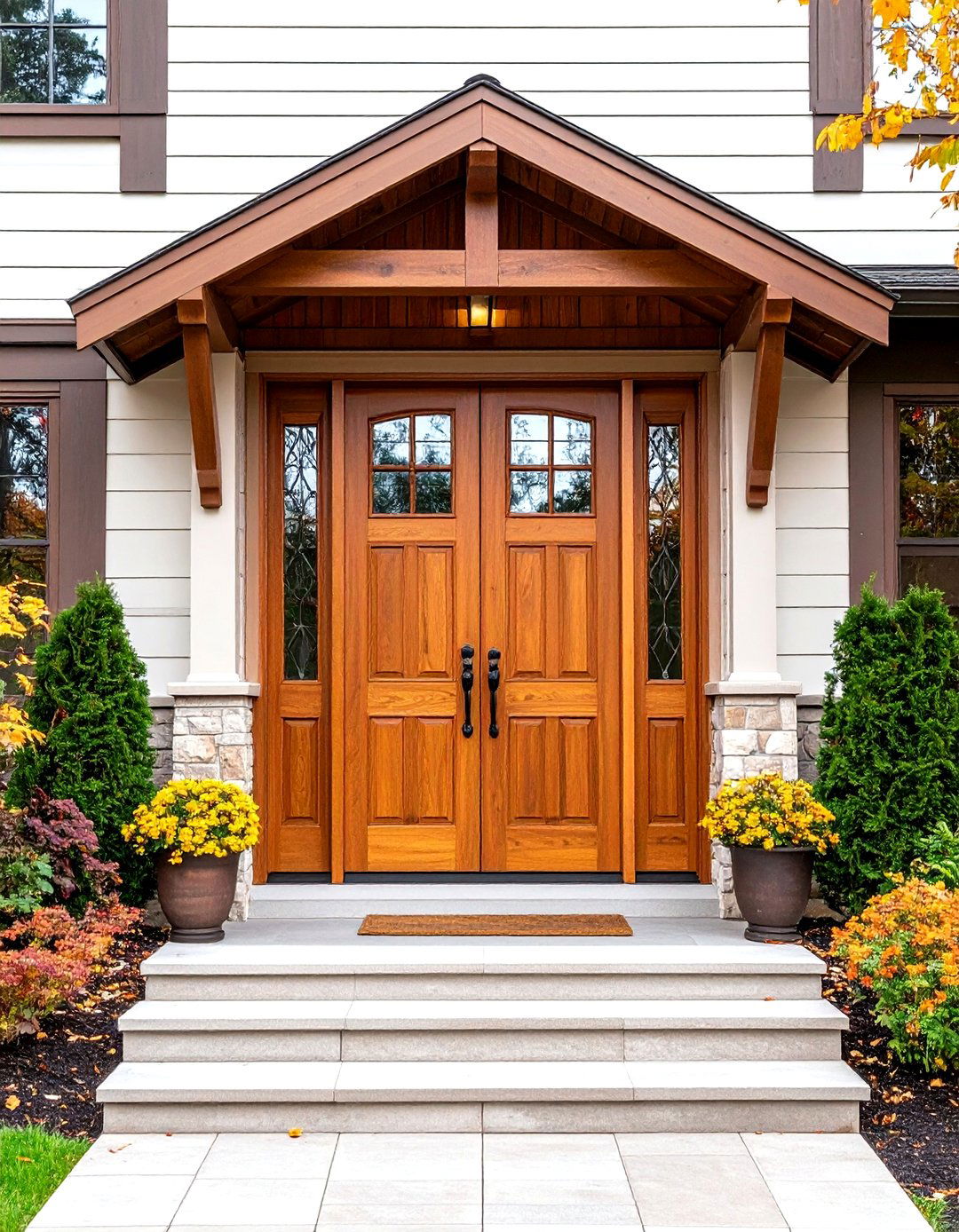
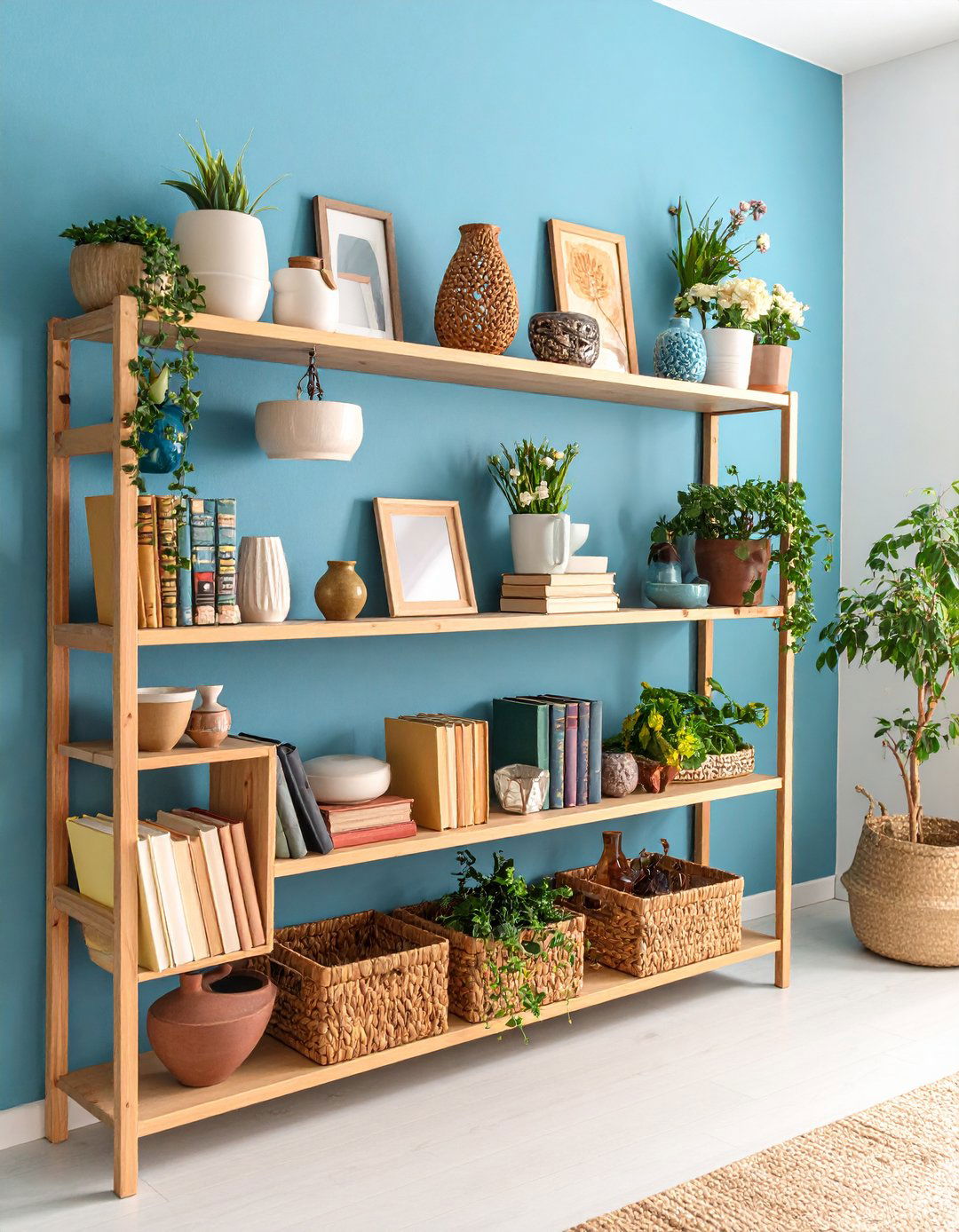
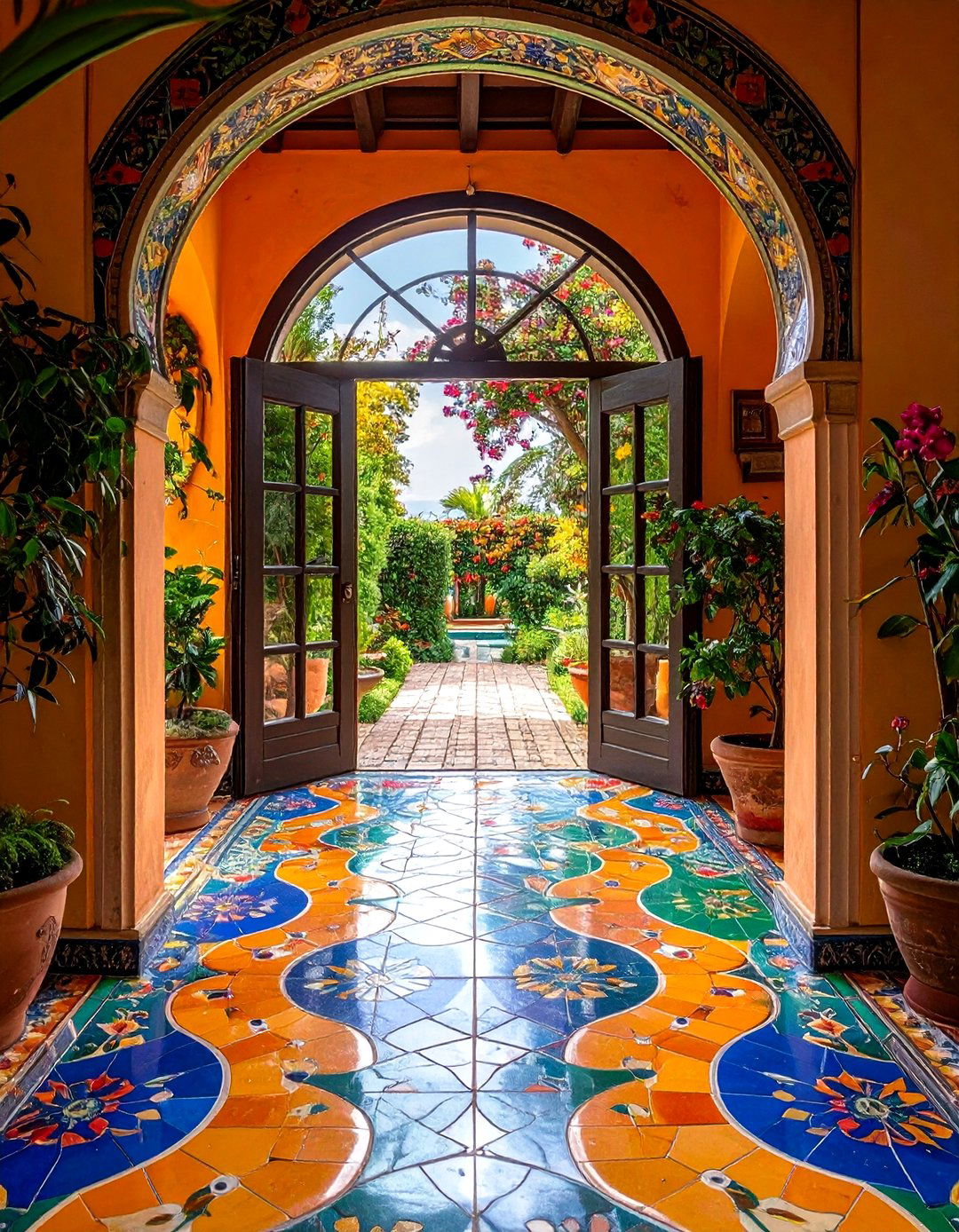
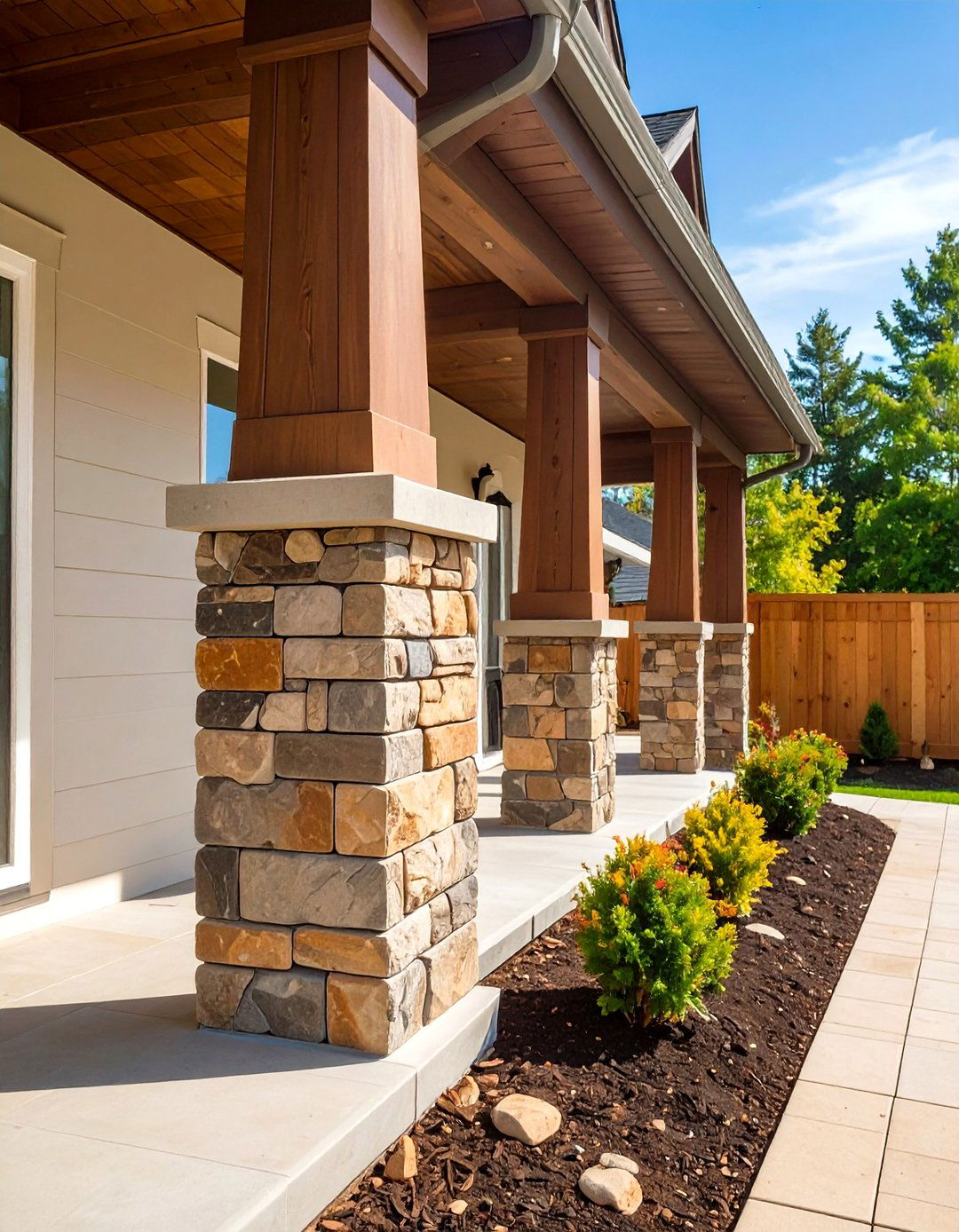
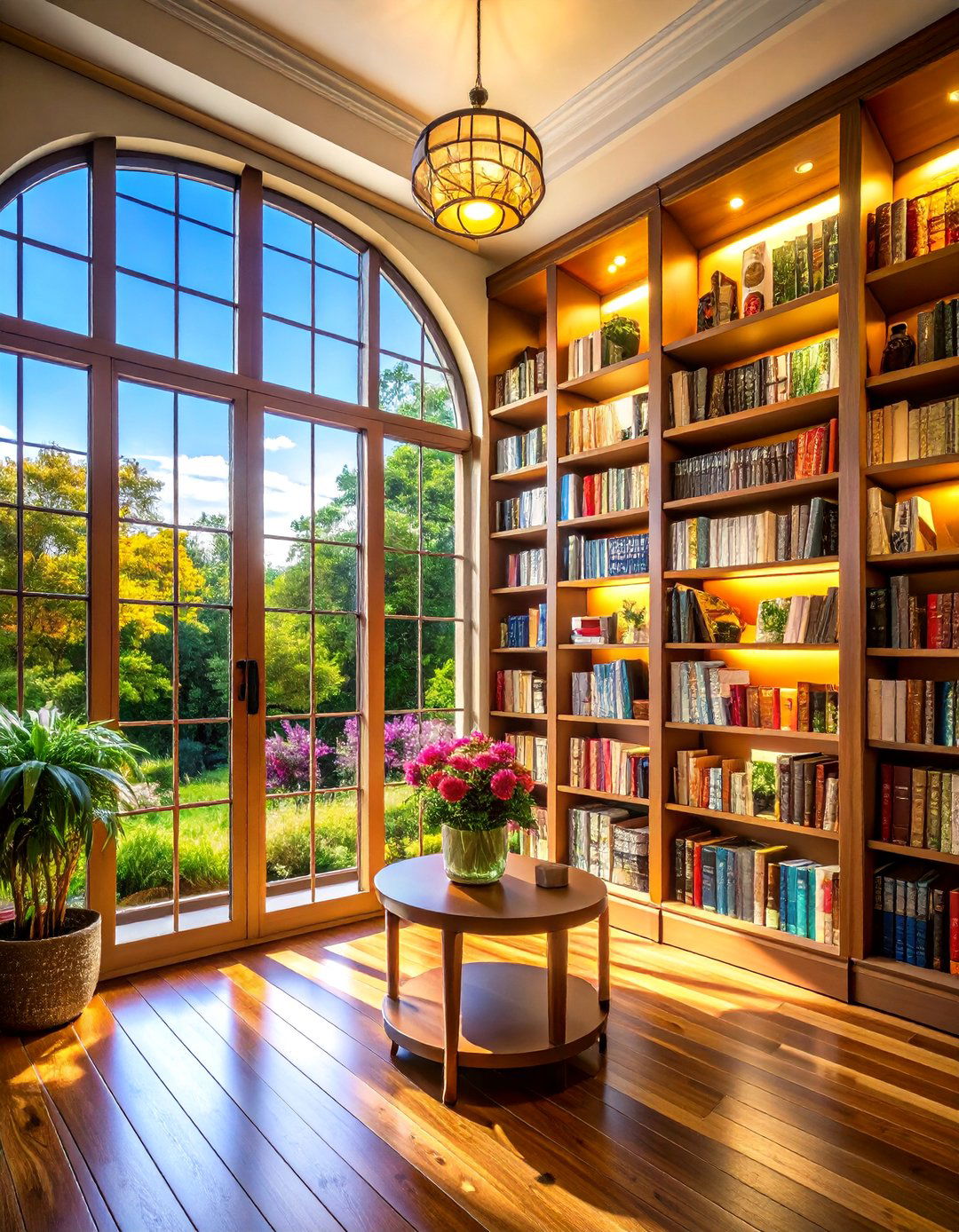
Leave a Reply